When I went to look around Zýmē’s winery, the charming Elena was the first person to ask me if I knew what the translation of Amarone meant in English. “Come to think of it, I don’t actually,” I said while stuffing my nose in another of Celestino’s magnificent wines. “It’s the joining of two words,” she replied. “Amare in Italian means to love and then Amaro means bitter, Amarone is the coming together of those two things.” And don’t we need a little of both to stay balanced in this funny old thing we call life? Perhaps that’s why I’m so drawn to Amarone.
I decided a few weeks ago that it was time for a trip, I had two options really. I could either go somewhere boiling hot where I could catch up on reading in the sunshine (I still haven’t finished Billionaire’s Vinegar) or, somewhere I could learn a little more about wine. In the end, despite my desperation for a tan, I decided to travel to beautiful Italia. It’s fairly close really and Amarone is truly my favourite wine, so that was that, I booked a few hotels and off I went. People have asked whether this was a wine tour or “was I booked in with a wine company”. I can tell you that it wasn’t at all, I simply booked accommodation, hired a car and picked my phone up and arranged the rest as I went. In fact, I called Quintarelli while having breakfast one morning and they said “If you can get here in 30 minutes you can come on the tour.”
It’s been a job to know how to write about all of this in a way that’s actually interesting. I’ve found it a lot easier to just talk about, especially as some of the characters I met were easier to perform than to get down on paper. But, I still can’t bring myself to talk to the camera so I’ll do my best with words.
I started my trip at Villa Quaranta, Tommasi’s hotel which is within the Valpolicella region, only 15 minutes or so from Verona airport. It’s a hotel and spa but seemingly also a hub for business meetings. I learnt this the hard way while padding my way to said spa wrapped in a towel one fateful afternoon. There were around 40 suited and booted ladies and gents gathered for a Pet Nutrition conference of all things.
I digress, so, I arrange to meet Paride Nardotto who is the Export Manager for Tommasi Family Estates. After a slight misunderstanding on my part, Paride very kindly picked me up from the hotel and despite my continuous efforts to get into the drivers seat (left hand drive problems), took me to the Tommasi winery.
To take a few steps back, I’ll explain the Valpolicella region to you as it was explained to me:
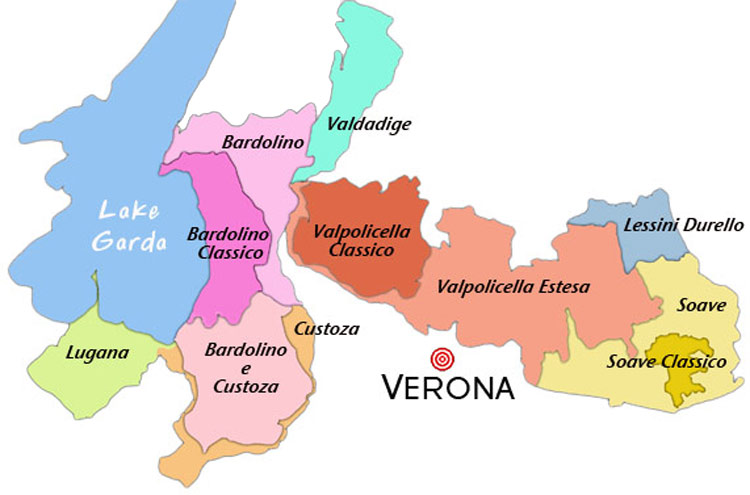
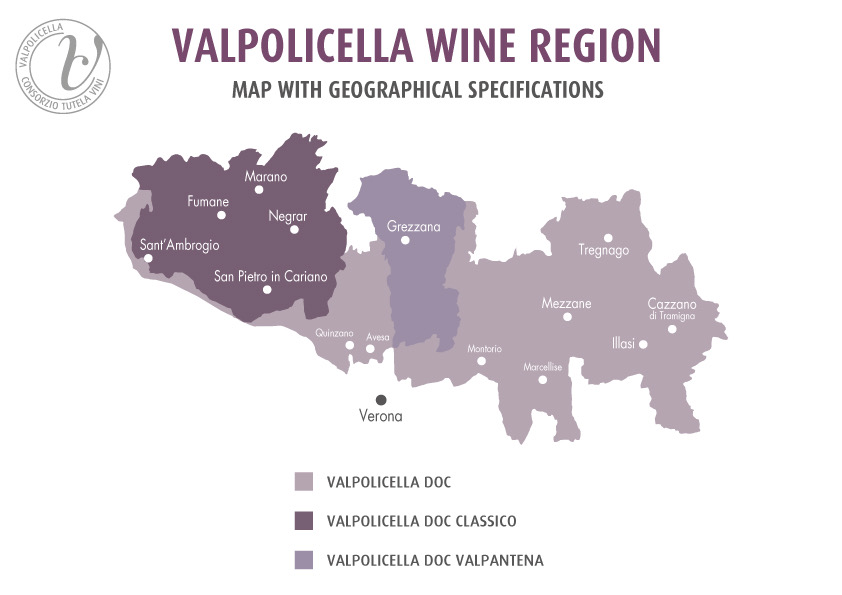
To help with labelling, Valpolicella wines are Venetian wines, it says Veneto on the label. Hopefully the maps will help but Paride described Valpolicella as the palm of a hand and there are five of the DOC Classico valleys going off like fingers; San Pietro in Cariano, Sant’Ambrogio, Fumane, Marano and Negrar. On the purple map above, you can see the darkest shaded area represents what I’m talking about and if, like I was, you’re zooming along in a Volkswagen UP! you can see these quite clearly as they’re the steepest vineyards surrounding the Valpolicella area.
This is important to understand because if you’re buying wine, you ideally want to see Valpolicella DOC Classico on the label if you’re looking for the truly good stuff. Alongside Valpolicella Classico we have Valpolicella Estesa which stretches quite far East where it meets Soave. This larger area has quite a different soil, it’s more calcareous (means limy, composed predominantly of calcium carbonate) which of course benefits some grapes but mostly produces less impressive red wines than its neighbouring vines up on the steeper slopes. However, once you get to Soave (pronounced swah-vey) the white wines, particularly Lugana, are something else.
Tommasi
Tommasi was founded in 1902 and is very much a family estate built upon years of experience and minds that have fortunately inherited the same work ethic and classic style of their predecessors. Paride explained the sheer size of this company; they aren’t just in the North of Italy but here there and everywhere. From Basilicata down South up to Lombardia in the North West of Italy. Tommasi has six wineries which combined have nearly 1,483 acres of vineyards across the country. They are producing 260,000 9 litre cases a year with Amarone at the forefront producing roughly 16,700 9 litre cases but it’s important to note they only make Amarone on exceptional years.
They’ve essentially expanded to keep the large Tommasi family busy. We are tasting fourth generation wine now, created by wine guru Giancarlo Tommasi who is the enologist of the family. The motivation and the growth possibly stems from Pierangelo Tommasi who is Managing Director of Tommasi and often the face of the brand. There are nine Tommasi’s in total, six working full-time in the wine business and the other three of the same generation are working in the hospitality side of the business.
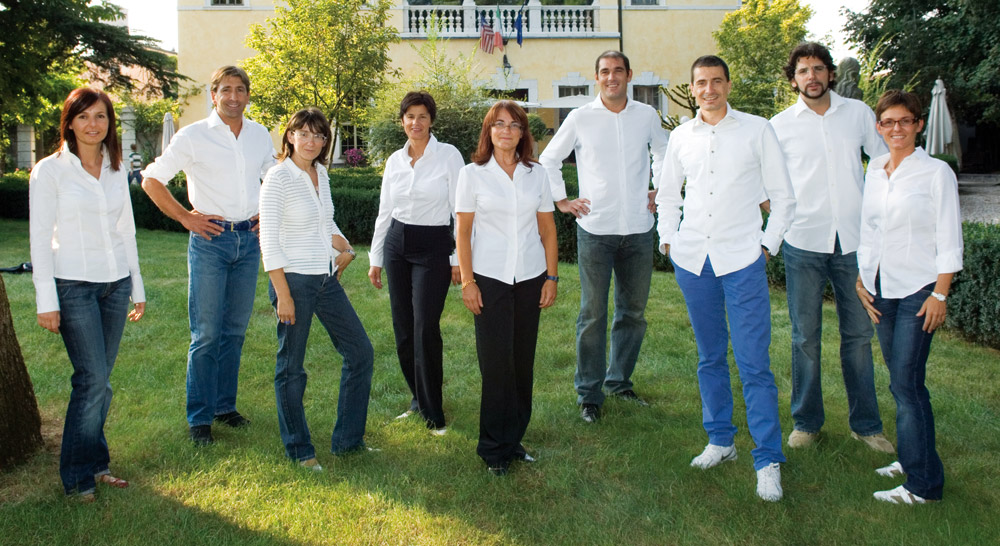
The winery itself has recently been totally renovated, it’s very impressive and supremely smart. A hub for Paride and his colleagues to show importers round before eventually letting them try the delicious wine. The real show-off piece at this winery is called Magnifica and it’s a barrel which holds it’s very own Guinness World Record for being the largest cask to hold wine. Magnifica is produced from Slavonian oak and has the capacity of 33,300 litres. It was manufactured by Garbelotto s.p.a. for Giancarlo, Ezie and Dario Tommasi. It was presened at the Vinitaly in Verona on 8th April 2010.
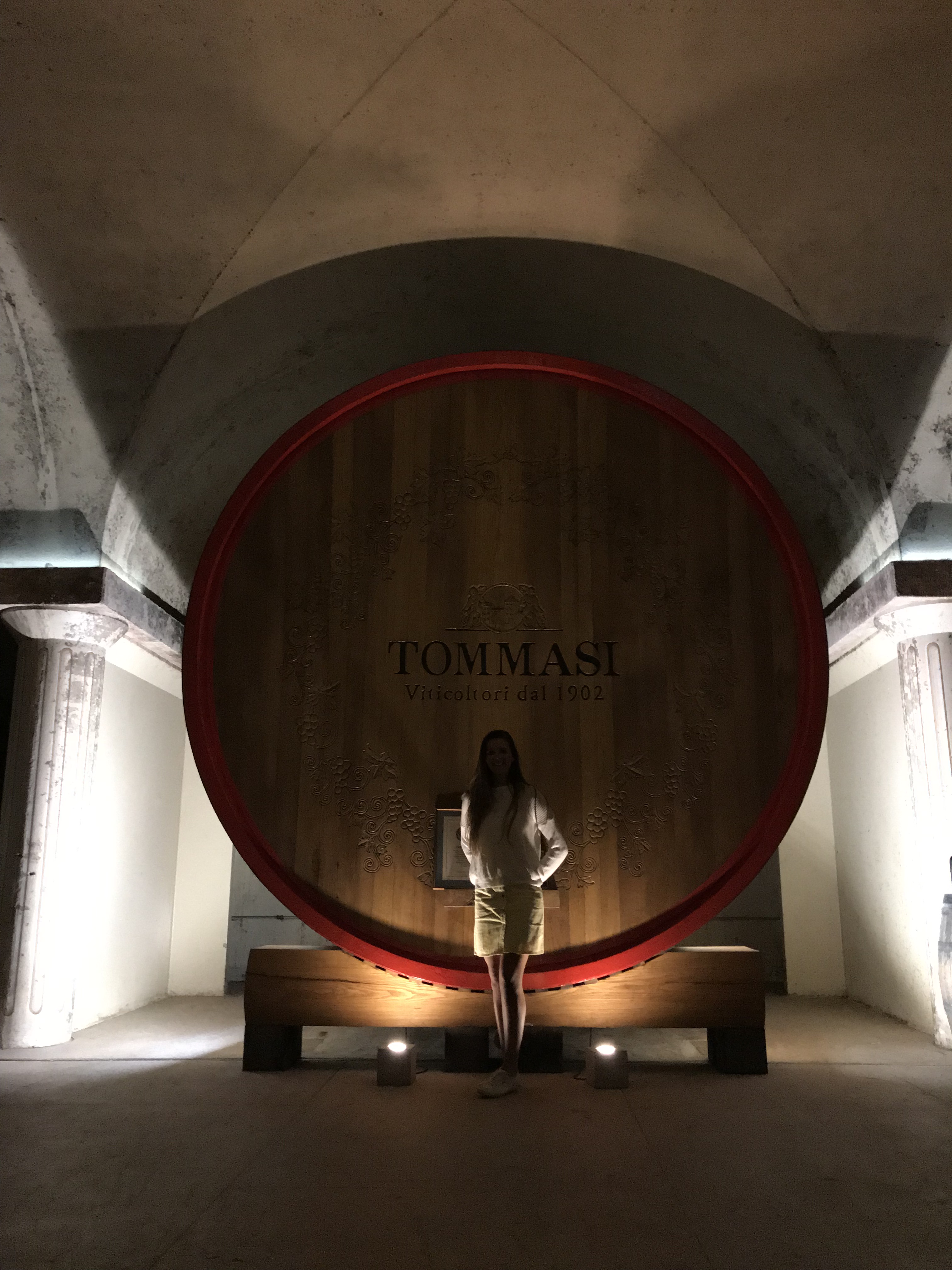
To make Amarone, winemakers use a process that only the Italians have perfected over the years to firstly, produce extraordinary wines and secondly, make a profit. No other country in the world has been successful at this, which I think says a lot about the important of tradition and passion.
The grapes they use are Corvina, Corvinone, Rondinella and Oselata. The grapes are harvested by hand before being inspected individually. If they pass the quality test they are left to dry on bamboo racks for around 40 -120 days. This drying process is called Appassimento (translates as ‘to wilt or fade’) and it will be up to the winemaker and the condition of the grapes how long they leave them for, the aim is to have 40% less liquid.
The next step is to gently press the grapes, take into account that they have to use almost double the quantity of grapes to produce one bottle of wine as you would say with most ordinary wine making due to the Appassimento process (another factor that adds to the cost). Then they are ever so slowly fermented in steel tanks at a low temperature, it takes up to 50 days for fermentation to take place, which is much longer than your average Merlot for example which takes 3-5 days.
Everything about Amarone is very Italian, il bel far niente. Once fermentation has taken place the wine will be transferred to Slavonian oak casks or barrels, they’re much larger than French barriques and they use Slavonian oak for the same reason. The wine very much speaks for itself, it doesn’t need contact with wood and the less, I suppose, interference, the better. By law, Amarone has to be aged for a minimum of two years before it ends its life back in steel tanks where it is filtered and bottled.
Tomassi’s Amarone is aged for 30 months in the Slavonian oak and a further year in the bottle before it is released. But they don’t just have the one Amarone…
Tommasi Tasting Notes
I don’t think I’ve really described Paride as anything other than kind so far but now’s the time to perhaps mention that he is also distractingly good looking, full of adventure and although his eyes are very confident he’s an open and honest man. So, I was a bit worried I wouldn’t remember any of the wines I tasted but FORTUNATELY I took notes.
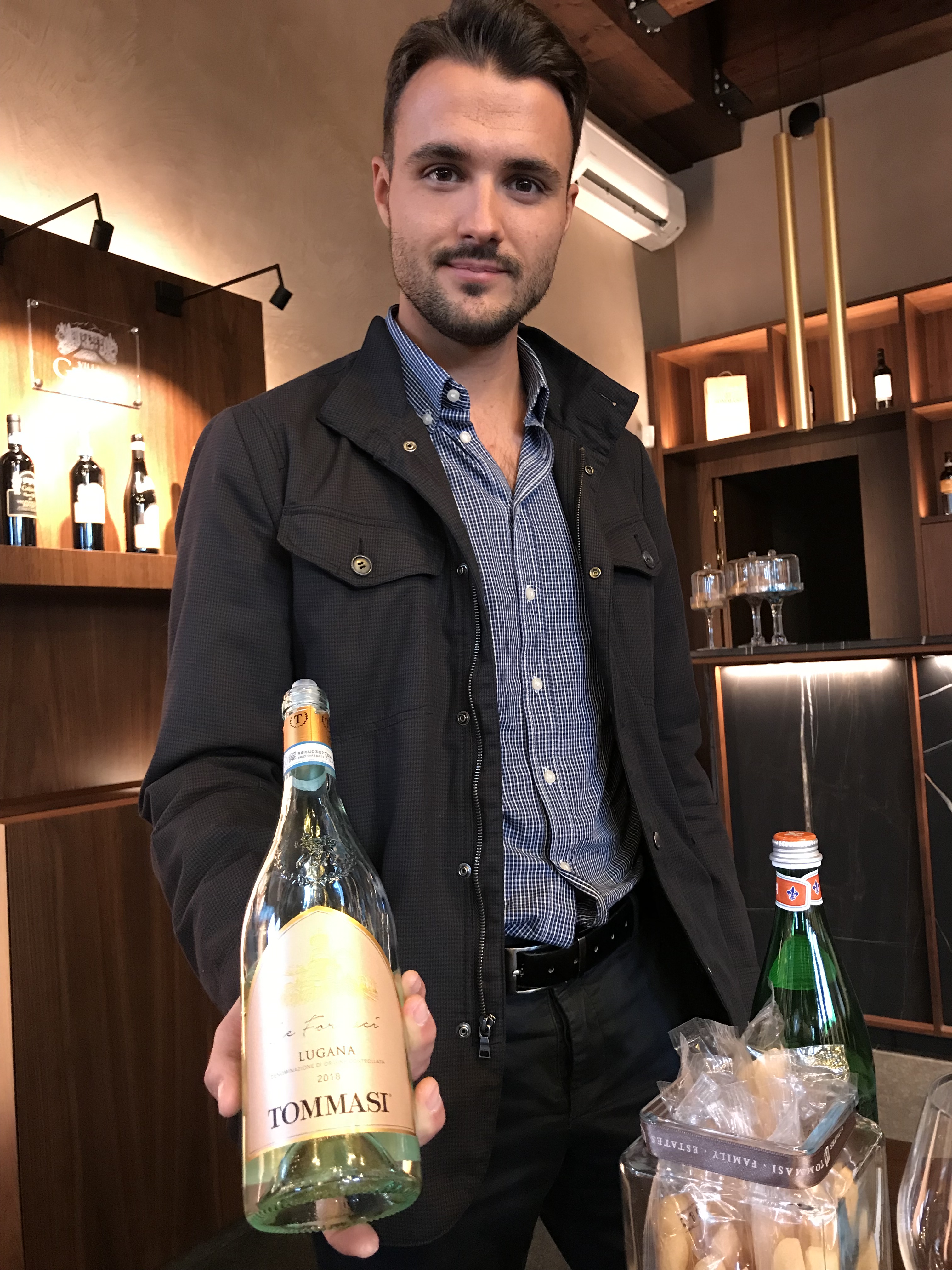
We’ll start with the Tommasi Lugana, 2018 vintage, expertly modelled by Paride himself. I’d never tried Lugana but I can tell you it has been added to my ‘must always be available in the cellar list’. It has the drinkability of shall we say Pinot Grigio while still being aromatic like a very good Sauvignon Blanc but the keep-going-back-for-more structure of a Chardonnay. The vineyard is close to Lake Garda so it has that lovely cooler climate which I think helps give this wine such a pleasant acidity.
Next up I tried the 2017 Rafael and I noted that this wine ‘opened the doors to the land approach.’ The grapes come from a single vineyard and woops have I mentioned the importance of the walls they build throughout the valleys that act as radiators at night for the vines? Gosh so much to mention, the grapes are grown in the traditional pergola method so the vines are quite tall, a canopy of leaves forms above the grapes which they thin out as they please depending on the sunshine to allow the grapes to ripen. And as they’re fairly tall they need to be kept warm at more of a height than say limestone on the ground. So, the walls absorb the heat during the day then radiate it out throughout the night so the lovely pergola shaped vines stay nice and cosy. Back to Rafael, this wine was aged for 50 months, it’s a little shy on the nose but has a smacking acidity and an absolute bombshell of cherry on the palate. The sort of wine you could pair so well with a good burger or lots of meat in general.
Then I tried the 2016 Ripasso, this is a wine created because of Amarone production essentially. For every bottle of Amarone, winemakers can make two bottles of Ripasso. It translates to ‘passing over again’ because the wine is passed over the important dried grapes left in the barrels by the Amarone. This wine is Corvina Veronese 70%, Rondinella 25% and Corvinone 5%. It is full-bodied but very smooth, a tease of the dried fruit you’d expect from Amarone. Good for beginners and half the price. More of a gentle kiss of a wine than the full on snog you get from Amarone, easier to pair with food and 13% so in some ways, safer.
We tried the Amarone next, the 2015 vintage which is for sale now has been ages for three years, it’s an investment of a wine. Beautiful on the nose, lots of red fruit, prune notes, some marzipan maybe. Then delicious, they all it a meditative wine for it’s total ability to be drink on it’s own alone. You’d certainly have to like someone to share it. So much about this wine is elegant, it’s silky and smooth, just perfect. Amarone has the potential to be ages for a long time, you could keep this for 20 years and it would hold its fruit.
I was also very fortunate to be able to try the latest Tommasi luxury project, their 2008 De Buris which is an Amarone wine that has been aged for ten whole years. It’s 15.7% and even to the eye you can see that the dried fruit has worked it’s magic. Much more of a garnet, very pronounced and it smells totally different. Sweet plum on the nose, cherry, really well-balanced when you taste it. Vanilla, damsons coming through, lots of complexity to this wine and an exceptional length. Tommasi are creating a De Buris brand, there is this wine and the hospitality side of the business are behind Villa de Buris, a luxury new hotel.
The project stems from La Groletta vineyard where Tommasi are growing the grapes for this exceptional wine. Only a 1.9 hectare plot at the highest point of the vineyard is used entirely for the production of De Buris Amarone Riserva, only the best will do! According to Tommasi, the vineyard’s steep slopes at 300 metres and the cool breeze from Lake Garda makes La Groletta the perfect place to produce this luxury Amarone. De Buris is a blend of Corvina (62%), Corvinone (25%), Oseleta (8%), and Rondinella (5%).
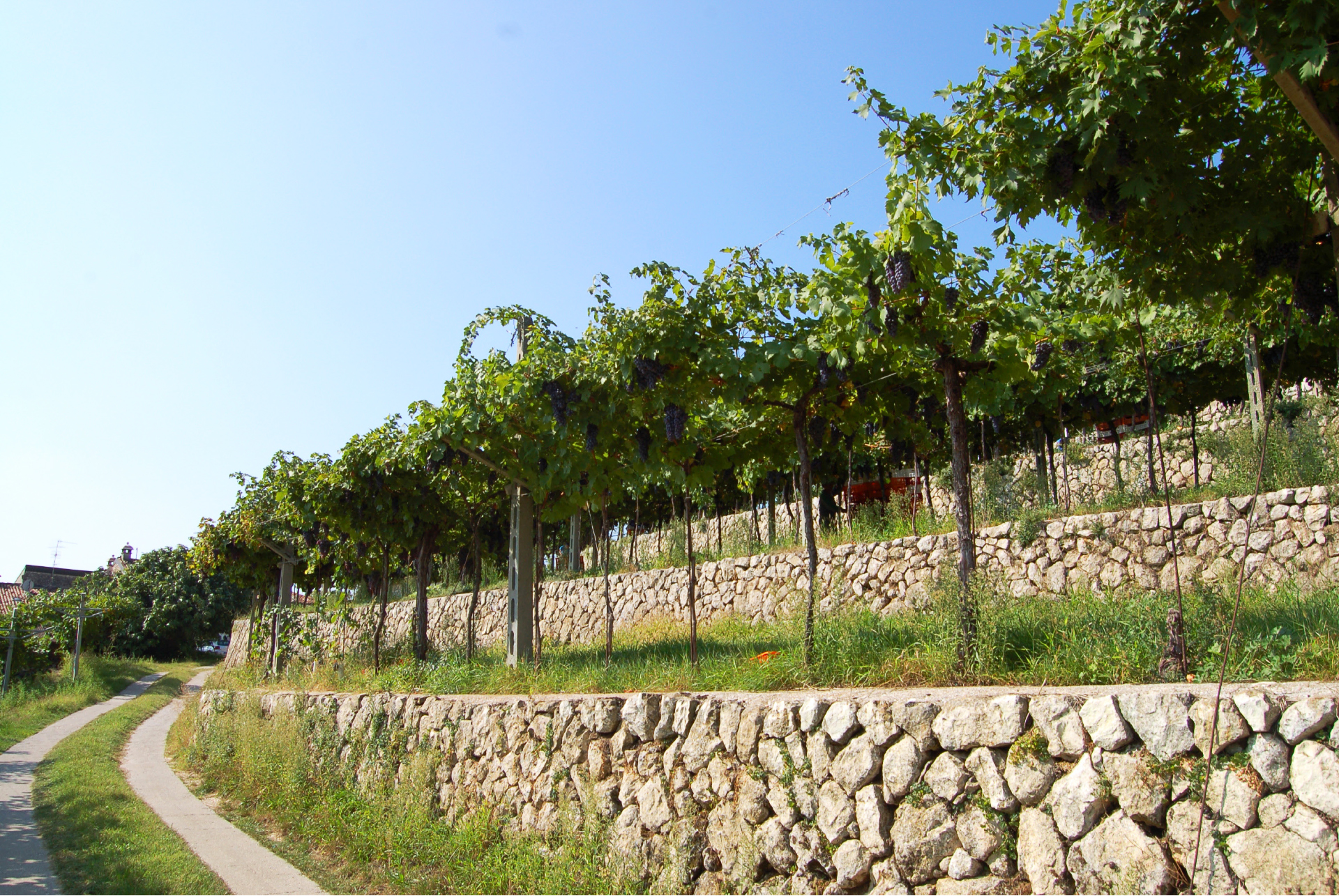
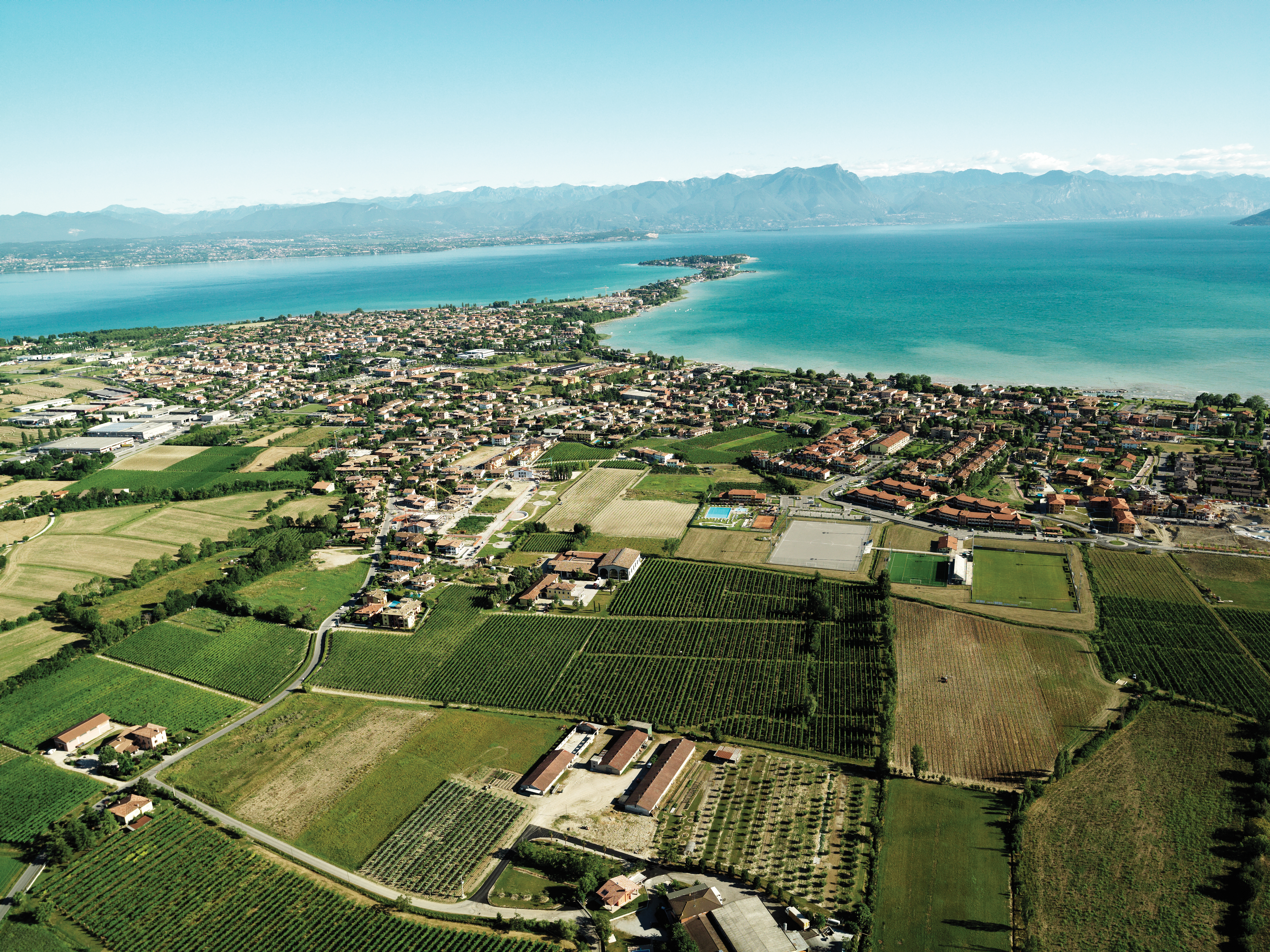
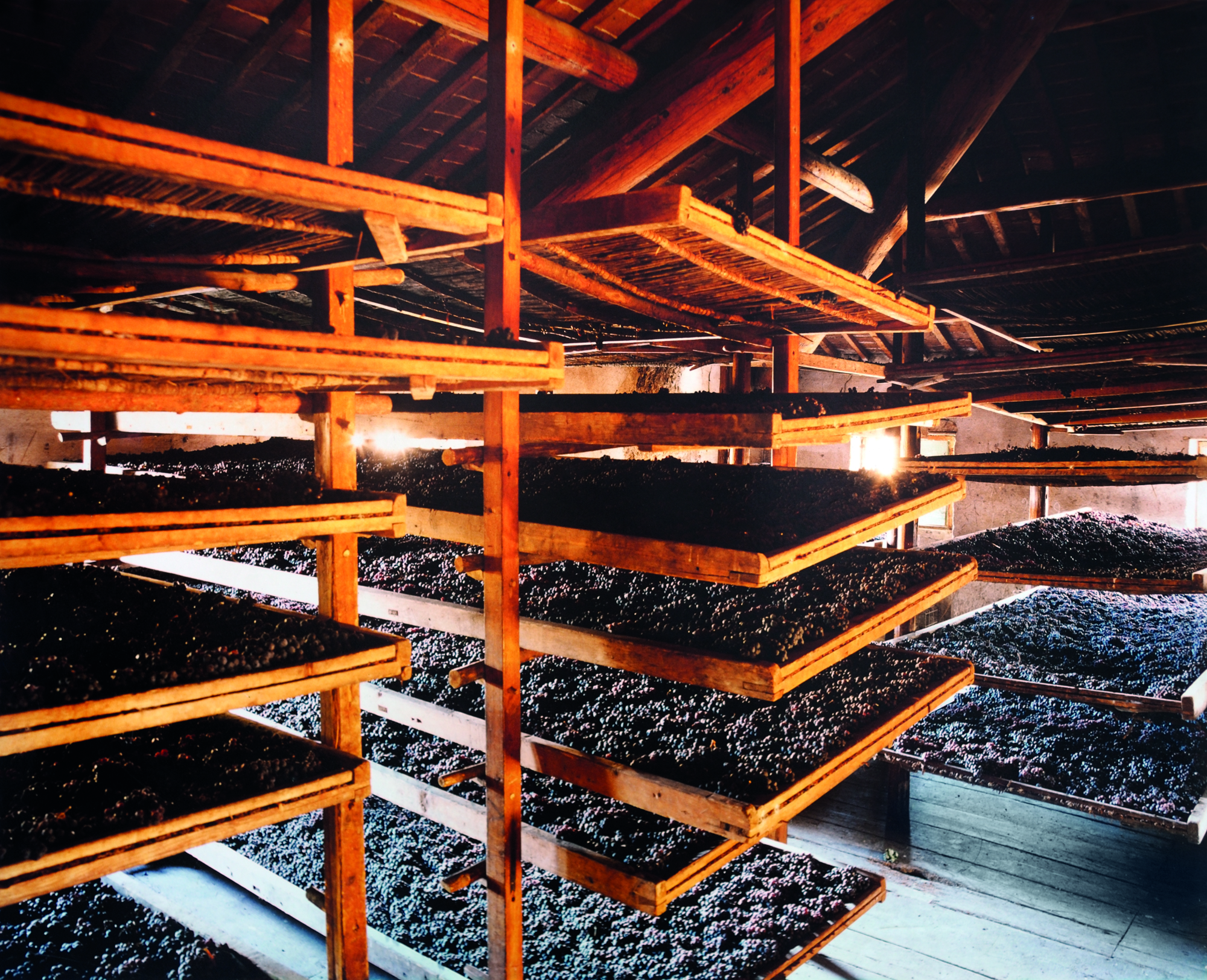
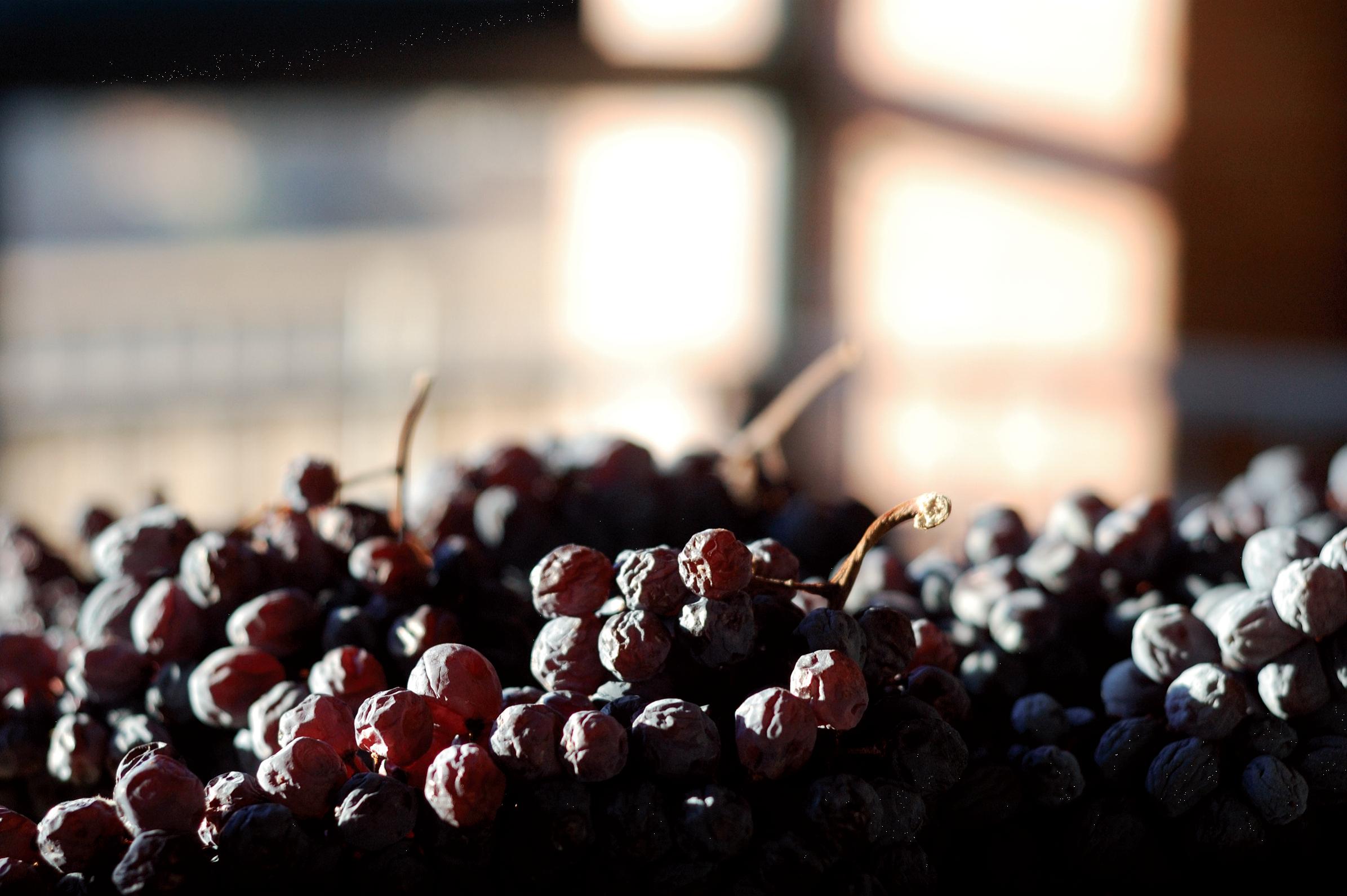
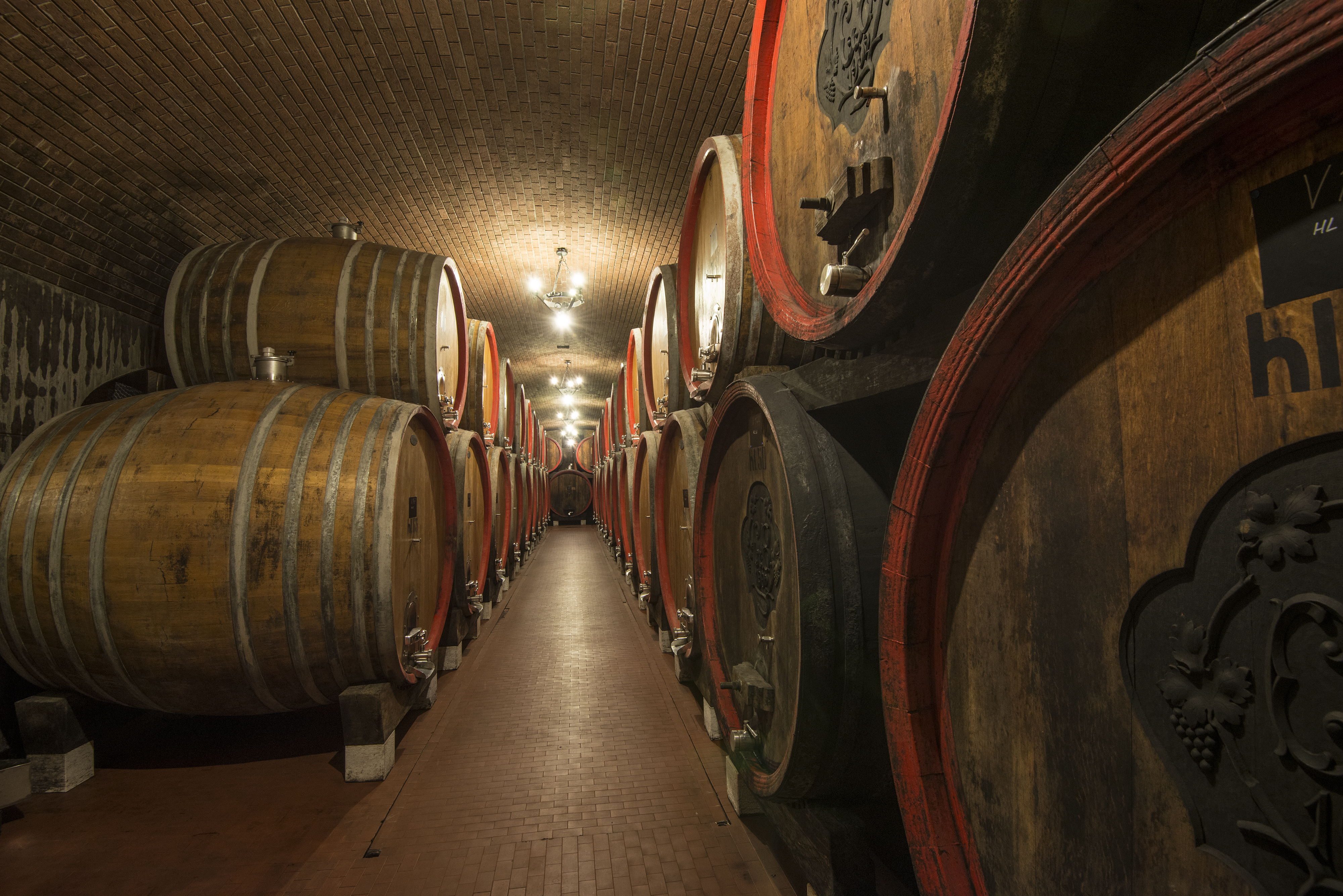
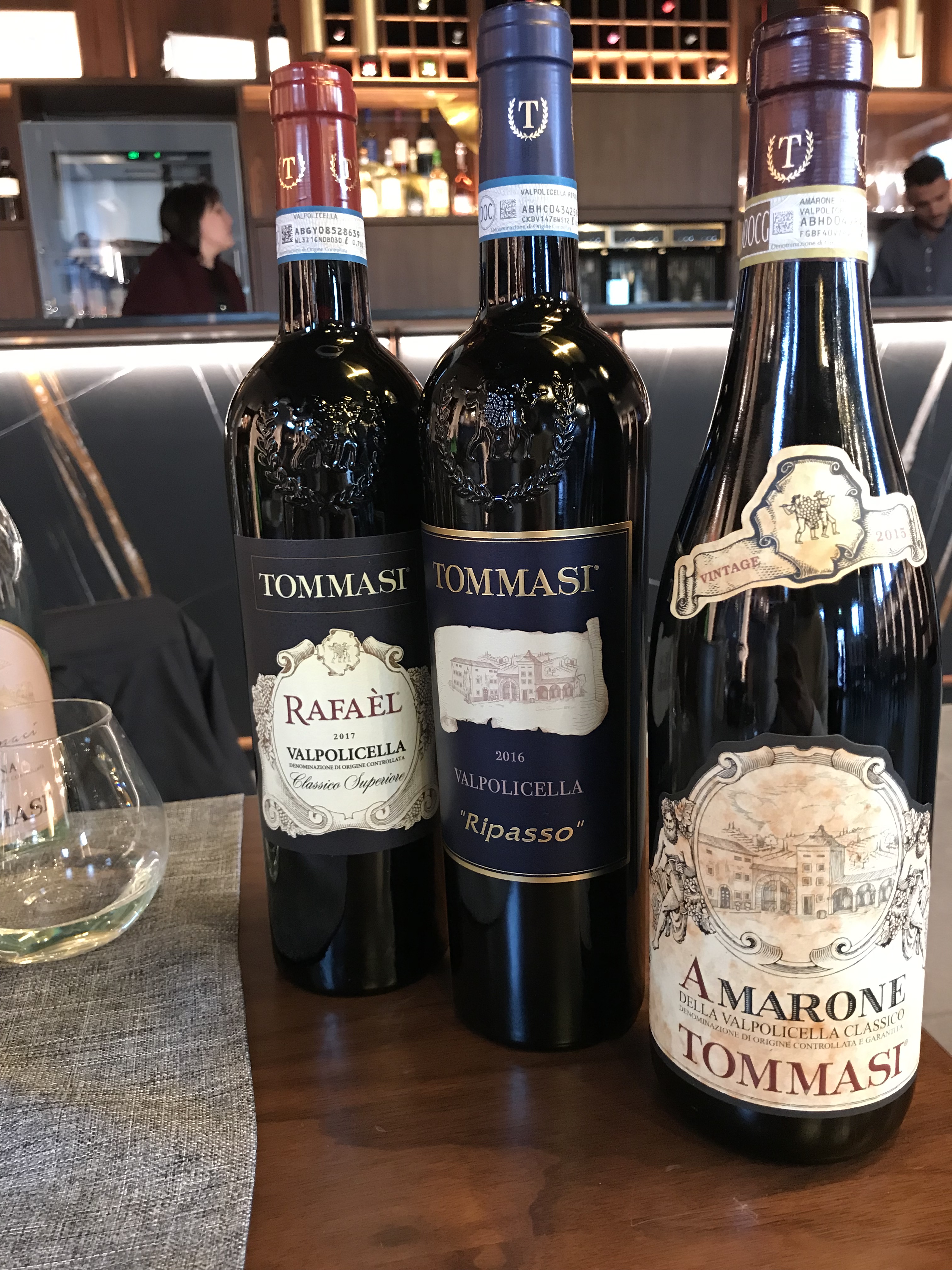
I had an exceptional stay at Tommasi’s hotel Villa Quaranta. It was my first experience of just lovely Italian people. For instance, I went swimming in the most heavenly spa and the lifeguard came over to me after my second length with a selection of goggles to choose from as he’d seen me squinting. It really is the little things, I loved it there and hope to go back in the summer.
Giuseppe Quintarelli
As I’ve already said, Quintarelli I somehow left until quite last minute but thank goodness they said I could visit. I had the most fantastic drive up to their winery in my up! (the explanation mark is branding, not me shouting) and although the skies were threatening and dark, the views up there were astounding.
Quintarelli is very famous all over the world, the labels stand out a mile away with the hand-written (now printed) original scrawl of Giuseppe’s daughters. The whole brand oozes family tradition and the prices reflect the small but mighty production.
On this tour, I wasn’t alone! It was where I met a wonderful chap called Clay Roup who had travelled to Verona to study his WSET Level 3 while waiting on a project with Wolfgang Steakhouses in Jakarta, Indonesia. Clay was SO excited he was practically shaking. Then there was a man called Steve who was buying wine for his house in Italy before heading back to Singapore. Steve was English but hadn’t lived in the UK since 86′, things had gone well for Steve in life but it’s only after I probed that I found out, what a down-to-earth man he was and so encouraging with the wine tasting. Steve was with an American importer called Lou who I think was mostly there for Vinitaly. It was interesting to have someone there with a commercial mindset among us enthusiasts.
Quintarelli sits on just 10 hectares in total across the three top valleys of Valpolicella. I think perhaps unusually, the Quintarelli wine goes through the Amarone production but rather than being left in just one Slavonian oak barrel it is moved around throughout the ageing process to different barrels. At Quintarelli, 80% of the grapes are dried in wooden boxes and only the very best, 20%, are dried on the bamboo racks after being hand cleaned. However, some of the grapes aren’t dried at all, if they aren’t up to quality then they are just fresh pressed. Quintarelli still bottle by hand and they produce less than 100,000 bottles each year but this varies on each vintage. They don’t do any bottle ageing they simply sell the wine when it is ready to be enjoyed.
When we reached the tasting room it was like stepping back in time, they have left it as untouched as possible to keep it to Giuseppe’s original standards. One of my favourite moments of the day (other than trying the wine) was when Steve asked for a spittoon. Silly Steve, “Giuseppe wouldn’t have wanted it,” was the response he received. Giuseppe very sadly passed away in 2012, but as you can see, his legacy is very much alive.
Quintarelli Tasting Notes
We started with the 2016 Primofiore which is 50% local grapes and 50% Cabernet Sauvignon. Primofiore means ‘first flower’ and the grapes are pressed fresh for this wine. They undergo a normal fermentation and then two years aging in barrels. It’s a bright ruby this wine, very fresh on the nose. High acidity, good length. Really fresh notes of red fruit, great food wine, a little thin for me.
Next up we tried the 2011 Valpolicella which uses the three mandatory local grapes, Corvina, Molinara and Rondinella. 50% of the grapes are fresh and 50% are dried. It’s a Classico Superiore because it’s from the three top valleys in the Veneto region. This wine is beautiful on the nose, some tertiary flavours and a little more oak. It’s aged for six years. Lots of cherry, red fruits, that Corvina spice. It can be enjoyed now but Quintarelli like to say their wines ‘walk a lot’ – they can age for a long time and the tannins will only get smoother.
The 2008 Rosso del Bepi (Bepi was Giuseppe’s nickname) is a wine that Quintarelli make when the vintage isn’t good enough for Amarone. However, like everything that Bepi created, this sort of become popular in it’s own right and has a demand too. 2008 was a cold and rainy year and so this Rosso del Bepi was produced. The grapes spent four months drying, eight years on oak so you can hardly call it a diet Amarone, the process is very similar but part of me wants it to be that. It has 3-4g/l residual sugar, it’s dry. A little leaner, a little less intense, but still a delicious offering.
2011 Quintarelli Amarone is 16.5%, it’s meaty. Once it had warmed up you got a smack of spice, much fatter, just spice spice spice, some chocolate and a really long finish. Now, when it is an exceptional year Quintarelli make an Amarone Reserva.
We tasted the 2008 Alzero next, an interesting 16.5% massive wine. 40% Cabernet Franc, 40% Cabernet Sauvignon and 20% Merlot. 7.8g residual sugar. Honey on the nose, just divine. Then the most exceptional tannins, powerful. This is a Bordeaux blend but with an Amarone process, a bit of a vai a cagare to the French maybe? A beautiful wine regardless.
We finished with the 2001 Recioto. This is a sweet wine where the fermentation is stopped early by dropping the temperature in the steel tanks. This leaves an alarming 70g/l of residual sugar. It’s very pronounced on the nose, honey, plum, prunes, sticky toffee pudding. Then nutty on the palate, very complex, a bizarre dry finish, crazy length. Just delicious, I wanted it to last forever.
And now that we were all ubriaco come una scimmia (drunk as monkeys) we could enjoy the scenic drive back down the magnificent valley of Negrar to our hotels, what a lovely morning. Interestingly, Quintarelli’s biggest market is the US and then Canada, come on the UK sort it out. Oh how the heavens opened as we all left Quintarelli. My little up! practically drifted back to Villa Quaranta through the deep puddles and then I made a run for it into the tranquillity of the spa.
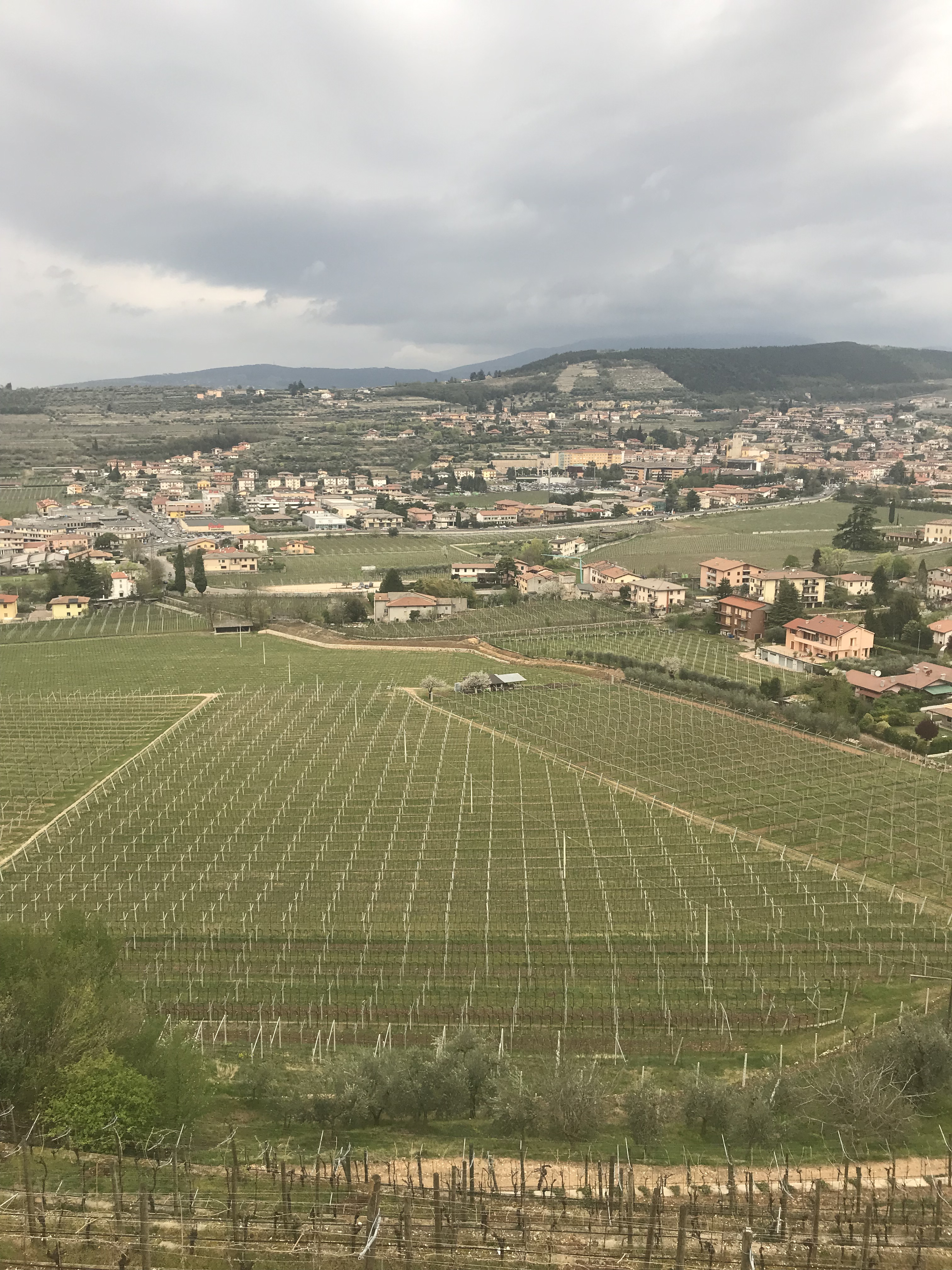
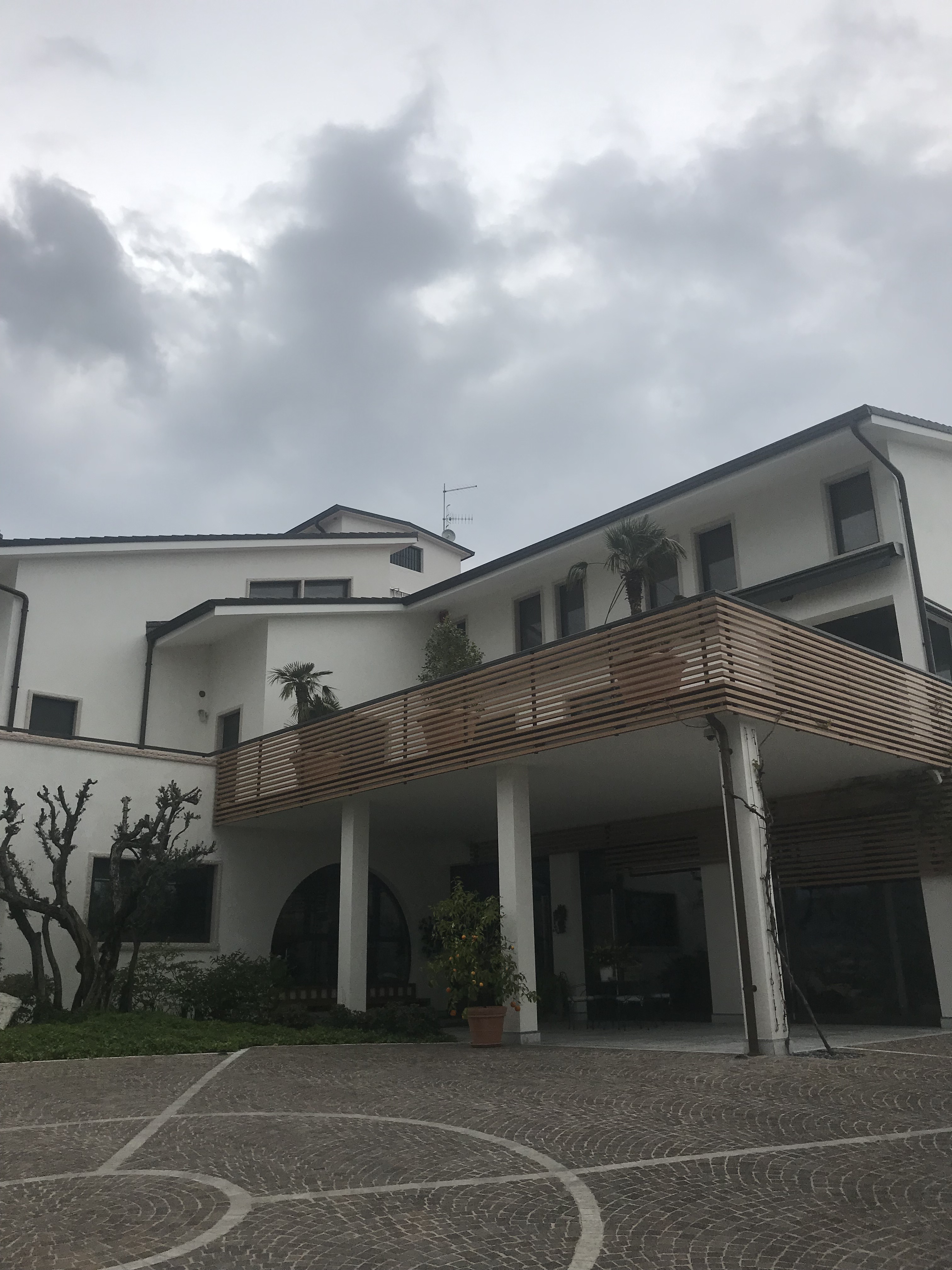
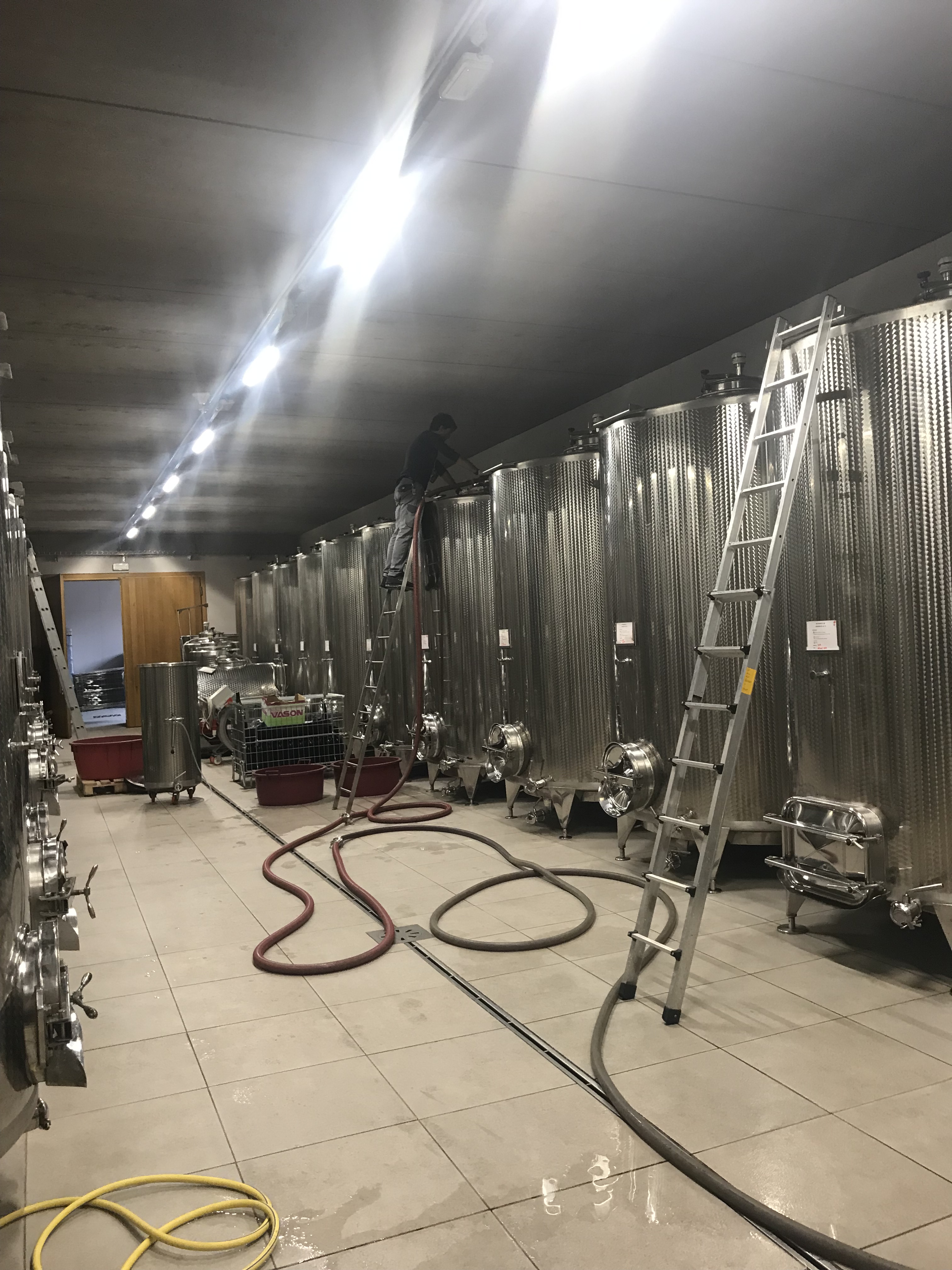
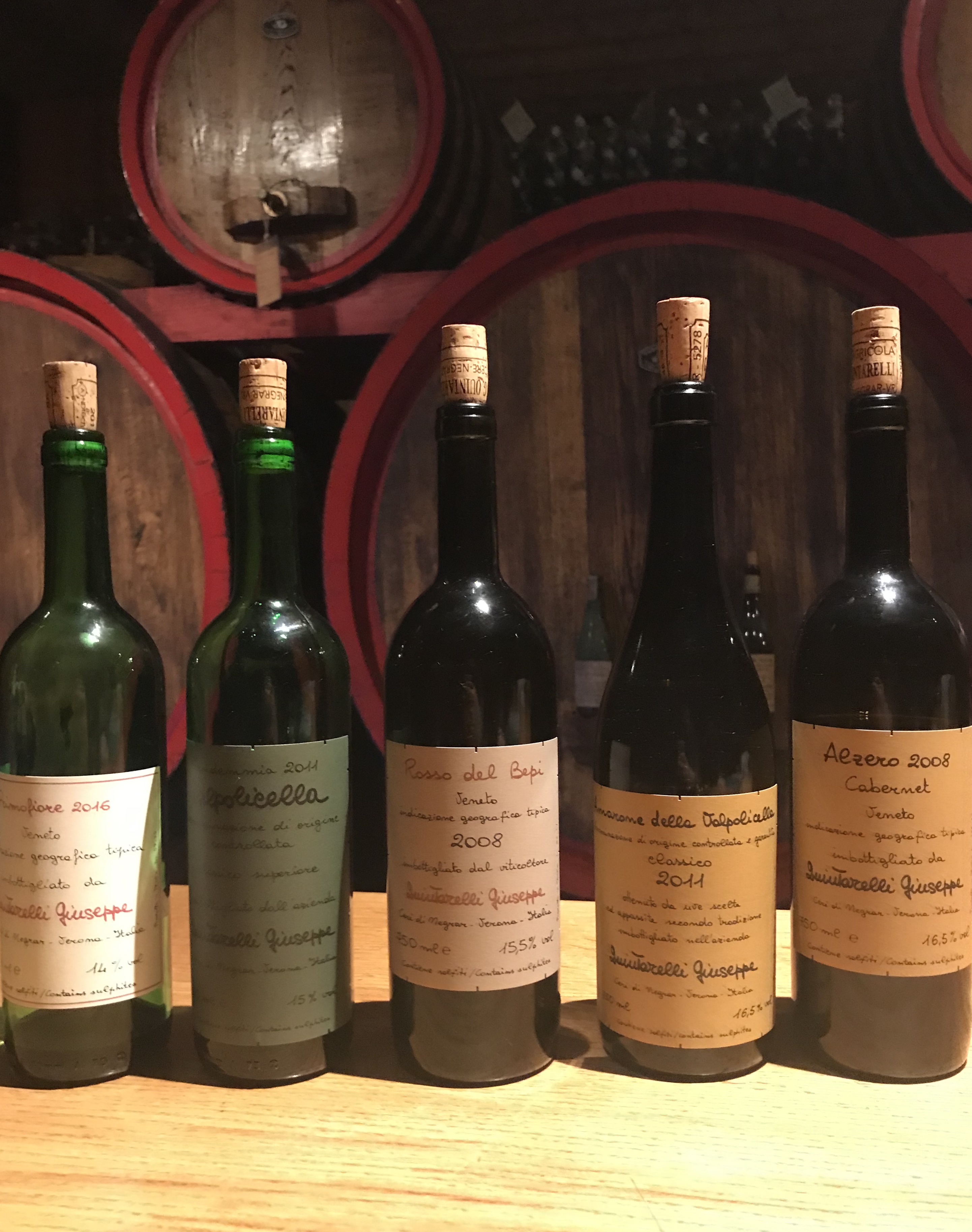
Zýmē
It was getting close to Vinitaly at this point so I am eternally grateful to
Zýmē , Celestino and of course Elena for showing me round at this busy time. Zýmē was totally different to many of the other wineries I’d passed through. As soon as I walked through the door I felt this sense of Zýmē being the crucible of the wineries I’d been to, it was new, exciting and different.
The name Zýmē, from Greek, means “yeast” and yeast is an indispensable element in the world of oenology. There is also a symbolic meaning, since it conjures up the concept of naturalness, a fundamental value in Celestino Gaspari’s professional and existential journey. There is lots of symbolism at
Zýmē. The winery logo represents a grapevine leaf in which is centred a pentagon, symbol of the five basic elements that combine to yield wine: man-vine-earth-sun-water. The pentagon appears throughout the magnificent winery, from the shape of the building to the storage of the wine, everything has been thought through thoroughly to reflect Gaspari’s vision.
From my understanding, a lot of what Celestino is doing is with ecosustainability in mind. His heart is not in but with Valpolicella and he will hold onto the history of the grapes and the wine for as long as he can make possible but somehow, that comes hand in hand with experimentation. It’s a risk and it’s paying off. As Elena guided me around the futuristic winery that like Celestino, is working conjointly with nature, I asked her what her favourite wine was and she said she’d tell me after I had tried everything…but we’ll get to that bit later.
This winery has sprung from the earth and mother nature has given back. As the team carried out the excavations, they found a karstic cavern, which gathers both rainwater and underground water. This, in unison with a huge natural sandstone wall provides the perfect environment for the barrel room.
But then, where the wine making happens you see science. A temperature controlled steel tank stands in defiance amongst the natural stone, a frost glinting at its base as it cools the fermentation process. Alongside this is an advanced bit of kit used to press grapes, more delicate than any other technique for maximum precision. Even the hand rail leading up to this level is used as a pump, it’s a complete work of art.
Elena and I make our way to the top level in the lift, designed like a bottle opener it works using leverage, the floor even looks like a cork. We go to a room where the view looks out onto the vines, I can’t wait to try these unique wines.
Zýmē Tasting Notes
We started with Zýmē’s Spumante, the Metodo Classico 2013. I haven’t mentioned much sparkling and this is the first for me to review. This wine is 100% Pinot Noir. First fermentation with yeast and cane sugar, then it follows the traditional Champagne method. Four years of maturation and Zýmē produce 5,000 bottles a year. It’s a clean lemon in colour with soft effervescence. Really clean and elegant, citrus notes, biscuity and a refreshing acidity. white flowers and honey on the nose, a slightly creamy taste. 2013 was a very sunny year so it’s a great vintage.
The second wine, From Black to White, a 2017 vintage is a very interesting wine. Celestino (it just feels wrong to refer to him as Gaspari and I have no idea why) discovered an albino Rondinella while out checking his vines so he decided to try and see if he could grow more vines from this Rondinella bianca. He was successful and so manages to produce this wine from 60% Rondinella Bianca, 15% Gold Traminer, 15% Kerner and 10% Incrocio Manzoni. It’s very aromatic on the nose, for me that is the Traminer but it could be the Rondinella too I’m not sure. It’s very fruit and refreshing, savoury and dry on the finish. Great acidity, a very well levelled wine. This is made in concrete vats, it’s a quick easy process then it undergoes six to seven years of aging. There is a fancy glass cork in this wine which I found interesting and that helps to save body in the wine, it can age well.
Next up was the playful label of Valpolicella Reverie 2017. Quite a bubblegummy scent on the nose, lots of cherry and candy like. This wine is the four traditional grapes, Corvin, Corvinone, Rondinella and Oselata. It’s very fruit, lovely bit of spice. I’ve actually written in my notes ‘cherry and spice and all things nice’ a great table wine that would easily pair with lots of dishes. They make 20,000 bottles and Elena says it’s a great summer wine and can be served chilled.
Valpolicella Classico Superiore 2016 was of the same variety but using the Ripasso method where the wine comes into contact with the Amarone skins. Aged for three years in wood, this was still quite young, maybe needs time then it would be quite a different wine. Exciting potential, very complex.
602020 was the next wine, Celestino’s take on a typical Bordeaux blend. 60% Cabernet Sauvignon, 20% Cabernet Franc and 20% Merlot. These vines grow on the very East side of Vicenza on the volcanic soils and the Merlot is dried for 30-40 days prior to pressing. Bordeaux style in every way but smoother tannins, fruity, sharp which makes it perfect for meat. Thirst quenching but leaves you thirsty for more. I think this would pair perfectly with game, a fantastic shooting season wine,
And now for my favourite, by chance also Elena’s favourite and I wonder what you’d think? Oseleta 2011, 100% the indigenous Oseleta grape that is rapidly going out of fashion. If I could only fill my cellar with this I’d be so happy, it really blew me away for something, can I say simple? Celestino is saving Veneto’s historical heritage but it comes at a price. You need three kilos of the grape for one bottle but for all that hard work you get the true expression of the genetics of the grape. The rich acidity and grape skin make big tannins, this wine could age for a long time. On the nose it is pure powerful aromatic vanilla, red fruits, strawberry and minerality. It’s just gorgeous to drink, so smooth. They only make 8000 bottles. Delicious.
We have a mistake of a wine next, Kairos, which means opportunity. First produced by experiment in 2002 with a minimum of 15 grape varieties. 10% white and 90% red traditional and local grapes. When this all started as quite a risk, they made 2000 bottles but now, 20,000 are produced because the blend has charmed everyone’s socks off. Very drinkable, a rich bouquet, to drink with or without food. Fruity, pleasant sweetness to it, naughty and interesting story to this wine which makes it such a relief that it’s delicious.
Amarone from 2013 next, an incredibly smooth offering, like velvet. Smell and taste mirror each other rather than surprise. Clean wine, can taste the grapes almost individually. Lots of character.
A treat to try the Amarone Classico from 2006 next, more of a sweet wine fermentation process then nine years aging. Tastes fresh and sweet but still has the well-balanced finish. Only made from the best vintages and the best quality. Very fresh and clean, delicious. An Amarone I could somehow drink every night…
And finally, 2009 Harlequin. Celestino is the only person to harvest for this wine. I almost didn’t feel worthy of drinking it. What a fantastic assemblage of the minimum 15 grapes. Wonderful complexity, a glimpse into the mind of not only the winemaker Celestino but the artist, the performer, the risk taker. Slighty woody on the nose, blood red, young even though it has been aging for 20 years. No words can describe the elegance, very dry finish. Personal wine to Celestino’s personal view of wine. 3500 bottles made. I should also mention the label as it made me quite emotional once I understood it.
Taken from the artist Angelo Peretti’s preface in Celestino Gaspari’s book Natural Alchemy, that he so kindly gave to me that day:
‘”You must call it Arlecchino,” or something similar, I said. Although the mask-character originates from Bergamo, when I think of Venetian theatre and Goldoni, the first character that comes to mind is Arlecchino, the servant of two masters, Arlechin with his wooden spoon, blind in one eye and deaf in one ear. We talked again a few days later and the name was changed to Harlequin, easier to understand around the world. […]
The circle came back to the beginning here: the wine was named harlequin. The label was the natural outcome of this. I sketched an idea: a white base with a hint of text, with the mask of Harlequin in the background, a drop of wine recalling the tearful search for food and love, a stain reminding us of greedy meals of macaroni. Later on, those macaroni came to be called gnocchi and are enjoyed in Verona during the carnival period, itself a metaphor of human comedy. Just as this wine is. […]
I am intrigued by other people’s memories, not mine. I personally hold on to the philosophy of carpe diem, the fleeting moment lived in the most intense way possible. Life is made of moments, all fundamental, all indispensable. This is equally true for wine: you will never find another bottle exactly like the one you just drank because today is already different, and tomorrow will be more so, in progressive evolution.’
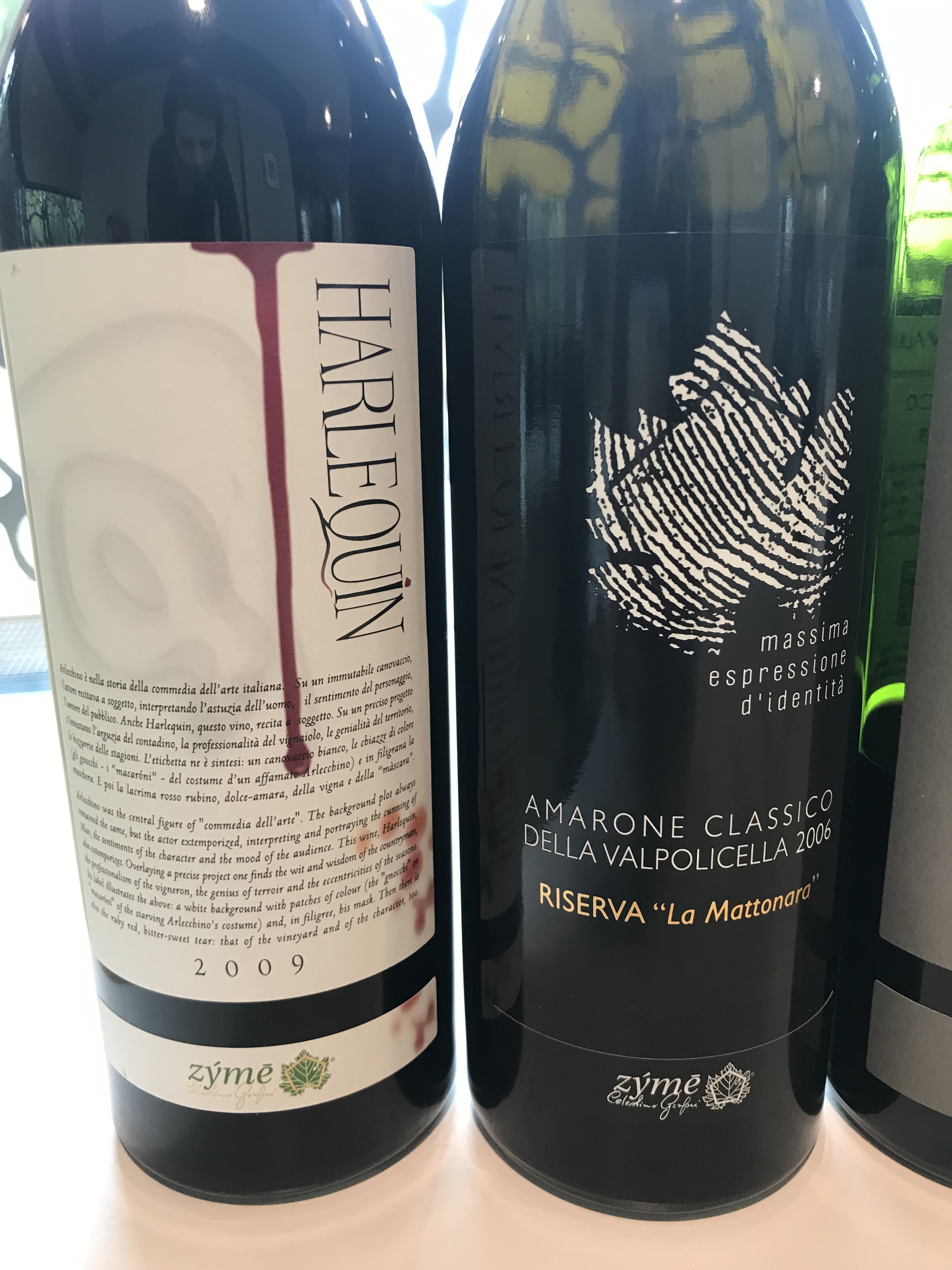
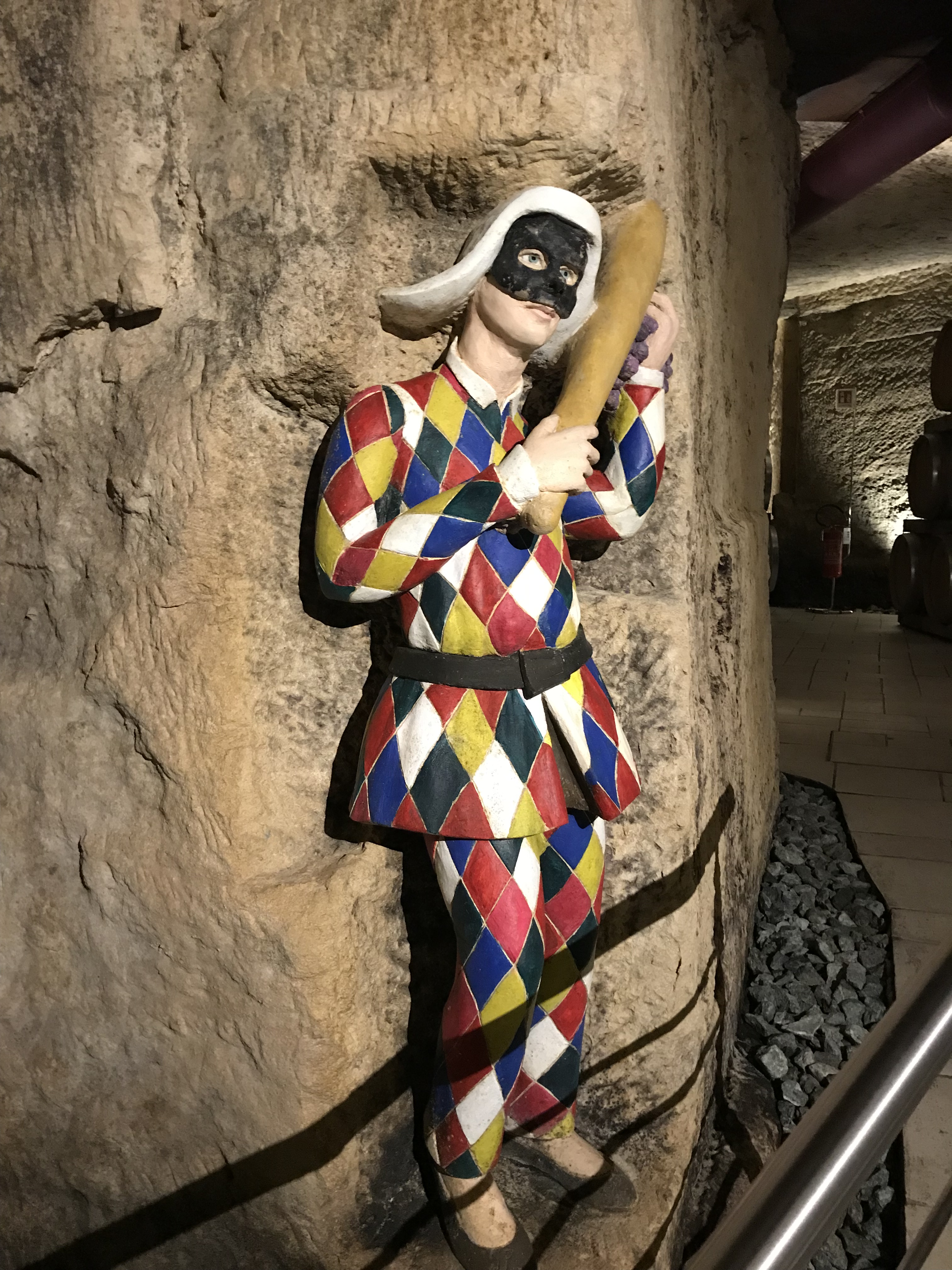
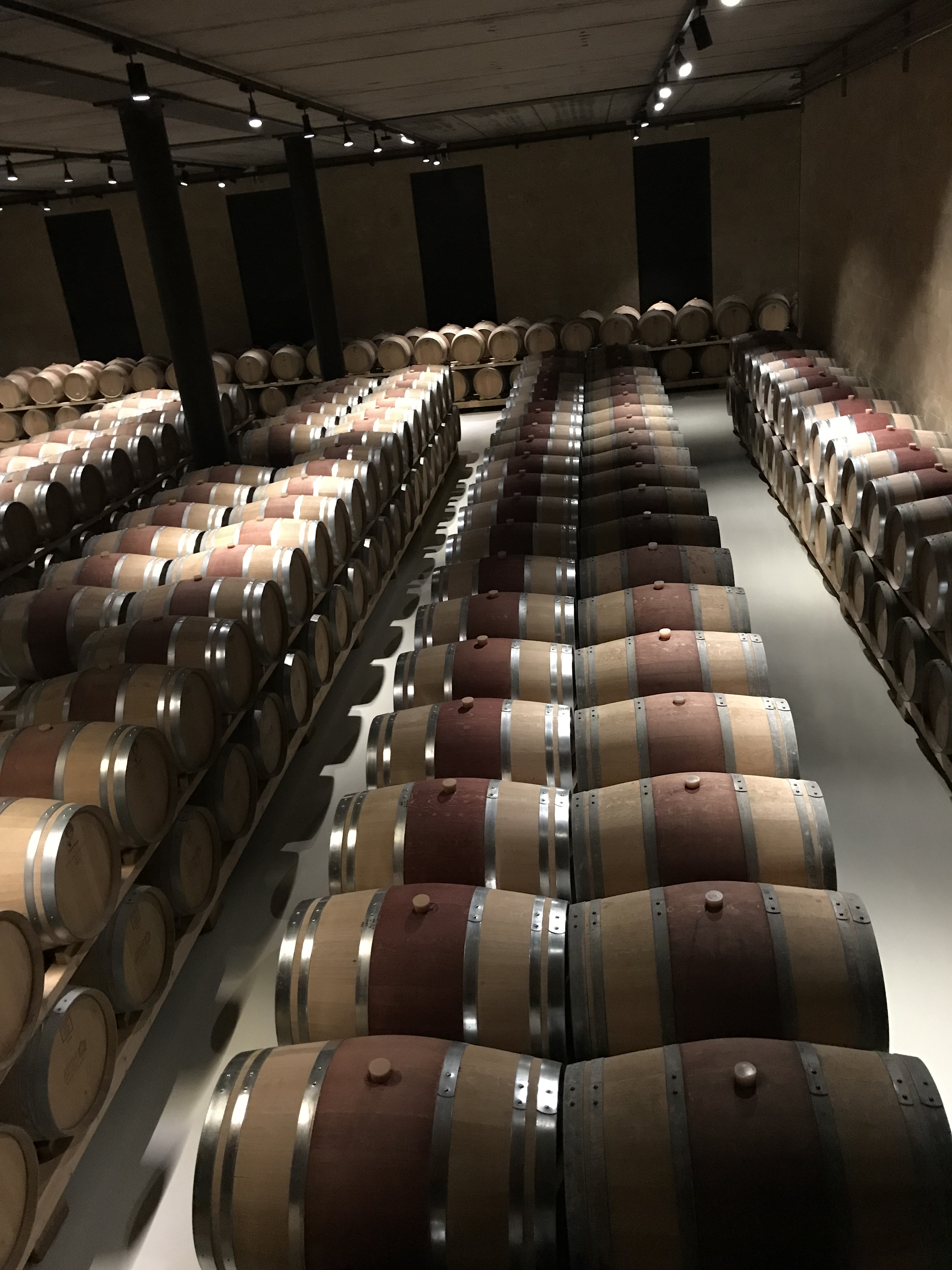
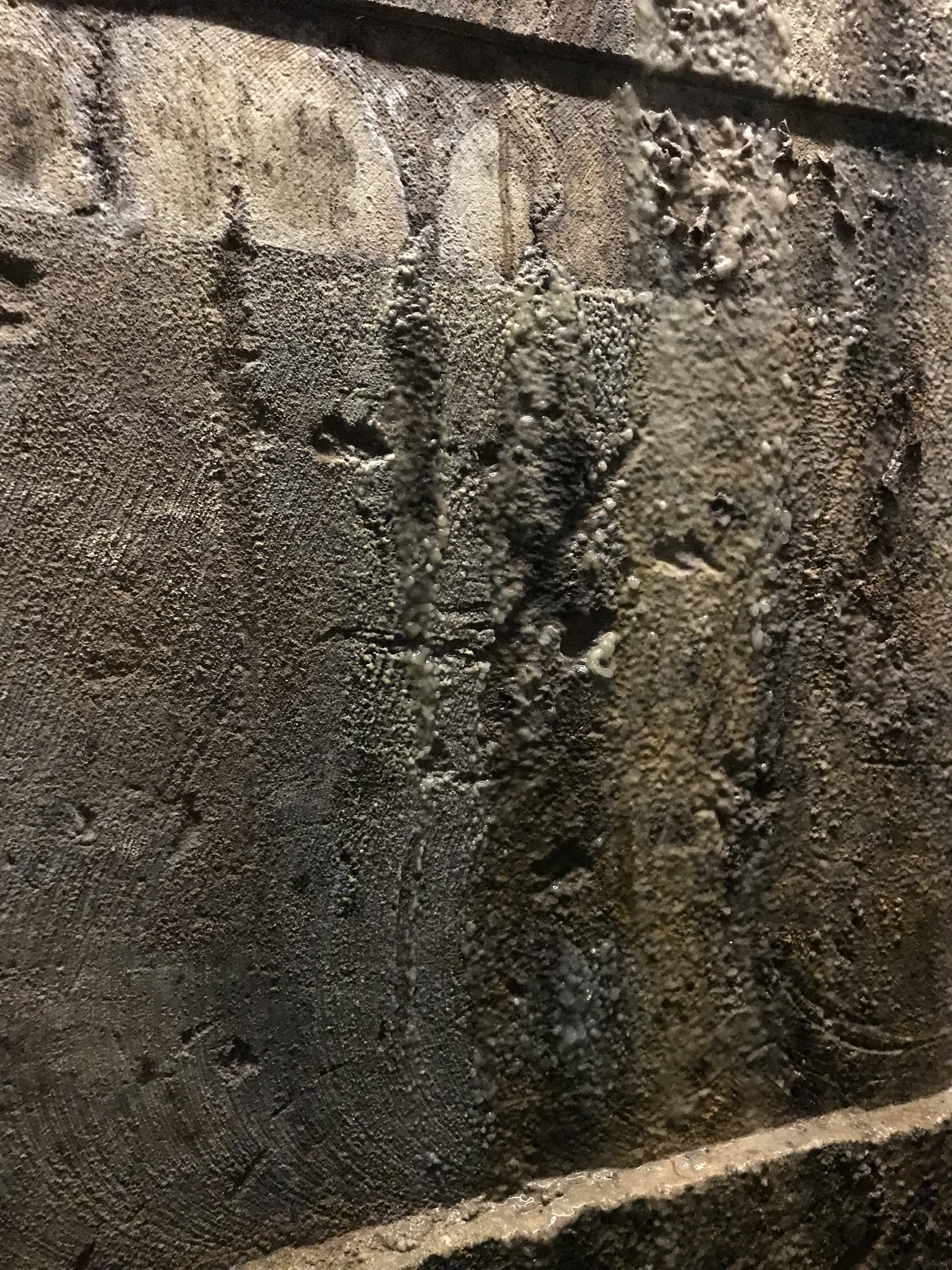
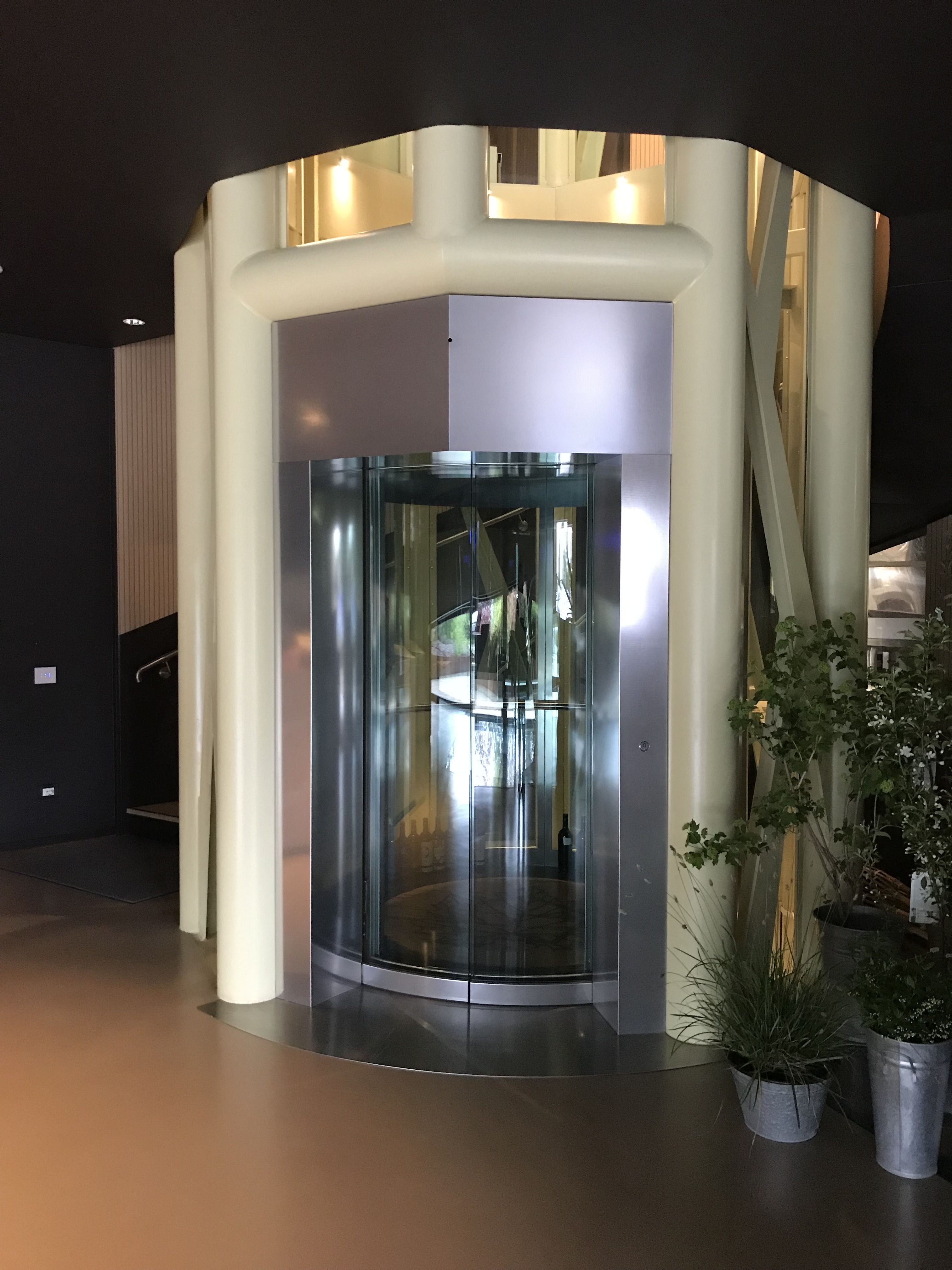
And so I had visited three very different wineries over a few days. It was John Hoskins MW who said at the beginning of the year, “And of course Georgie always spits,” with every hint of irony he could muster. Suddenly I was nailing driving on the wrong side of the road in the wrong side of the car, was it all the wine? After Zyme, I made my way to the Valpolicella branch of Signorvino to meet Clay and his fellow WSET Level 3 students after their exam. Everyone was analysing their questions and answers over lunch and we debated even more wine while enjoying some lovely traditional Italian food. It was decided that after lunch we were to visit Tedeschi winery. Clay had told me that it was the go-to Amarone that he’d heard of so I was interested to see how it compared.
Clay, Diego, a few others and myself whizzed over to Tedeschi winery post lunch and after a brief tour where I saw huge concrete tanks that I’ve never seen before, we sat down to taste 12 wines.
Tedeschi Tasting Notes
Going to a winery with a group of really fun guys who happen to know their stuff totally changes the experience. In a good way! It’s just you can’t help but be influenced by each other, and if you can’t be influenced you just have to laugh and agree to differ. Tedeschi are very much of the same view on oak. “You must feel a connection between the wine and where it is grown, no over powering with oak, what is the point?!!”
Tedeschi produce 120,000 bottles of Amarone, it is their most popular seller. 40% of their overall grape quantity goes for Amarone production. Interestingly, Canada is their biggest market followed by the EU, then Scandinavia, then Holland and then Asia. They have 47 hectares of vines, but around 58 including woodland.
Tasting notes included everything from my absolute favourite from Clay, “Oh wow, (this is a Texan accent) it smells like…a pheasant with a gun shot wound to it’s neck!” To which Diego replied, “I smell a wet fox, running into the woods.” We laughed hard but the descriptions were fairly accurate, you just had to be there.
The first eight or so wines for me all had a very similar note of Balsamic and I begun to wonder if my nose had broken. They were all very similar but different in terms of style and grapes but I just couldn’t move on from Balsamic. Nose possibly still broken at the eighth wine, the first Amarone, I actually wrote ‘much better on the nose, honey coming through, some milk’ which makes me wonder whether I should share any of these tasting notes.
Regardless, it was the 10th wine that was gamey. La Fabriseria Amarone 2011, a massive 17% corker. Jammy, leather, workshop notes on the nose. Delicious wine, really wholesome and rich, gamey, how it would be divine with some venison.
We were treated to a 1996 Nicalo Valpolicella Superiore for our 11th wine. Some proper sediment in this, a pale garnet. Very interesitng to drink, it had kept it’s fruit well, damsons and dried raisins on the nose.
Nose seemingly up and running again we finished with a Recioto, very purple in colour. Dark red cherry, lots of fruit, red liquorice. 100g/l residual sugar, not one for before bed. Very fresh and great acidity.
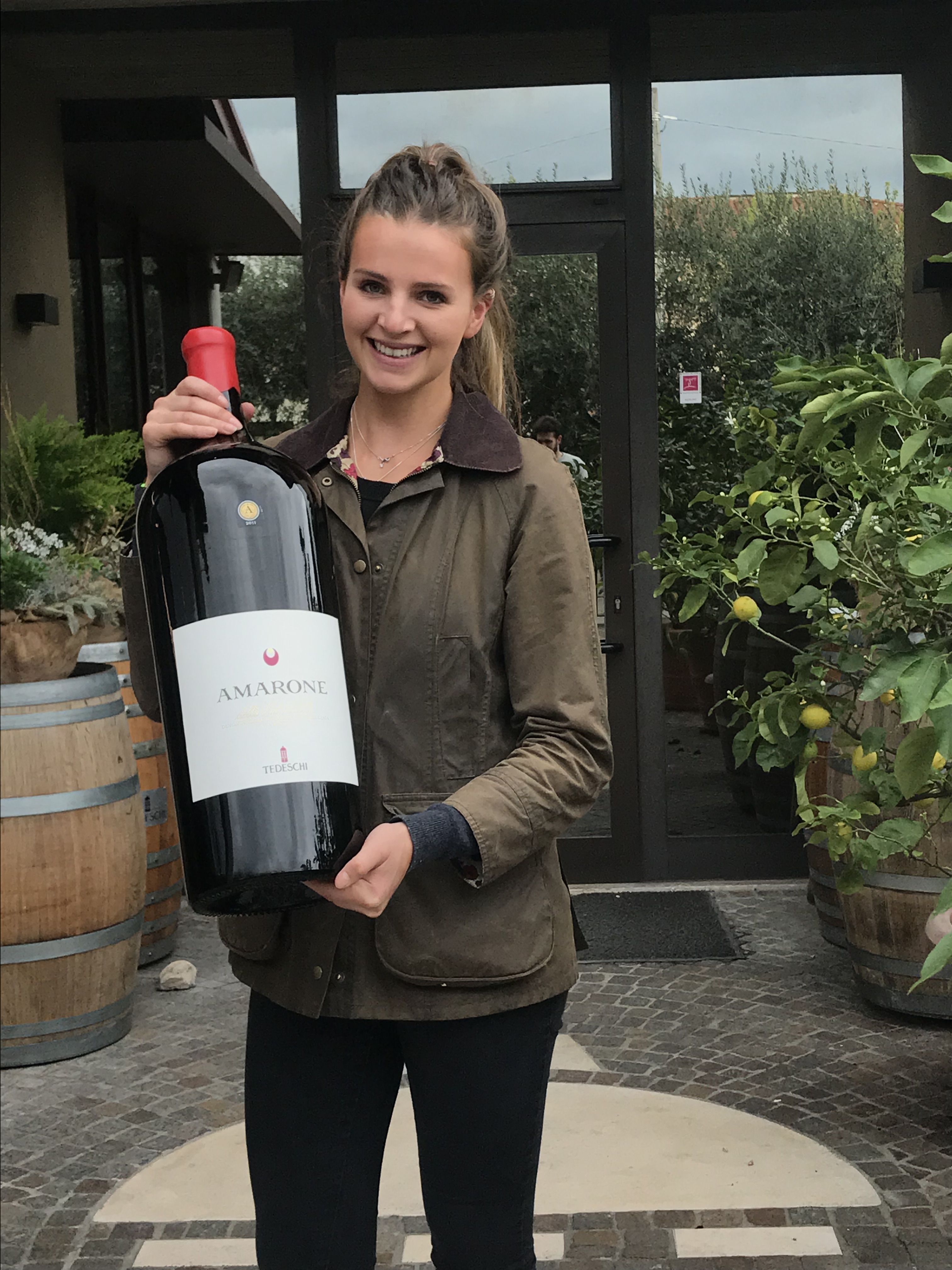
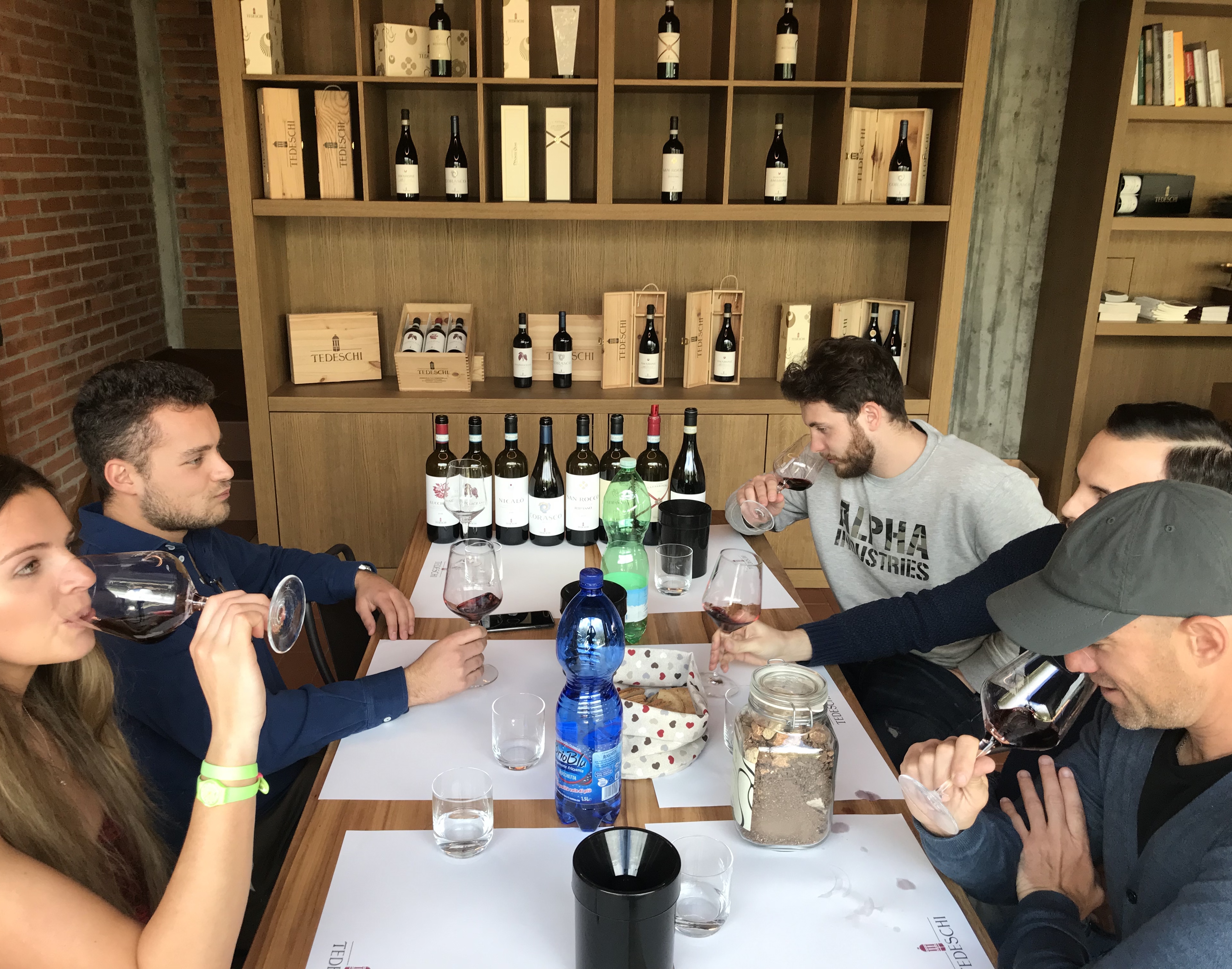

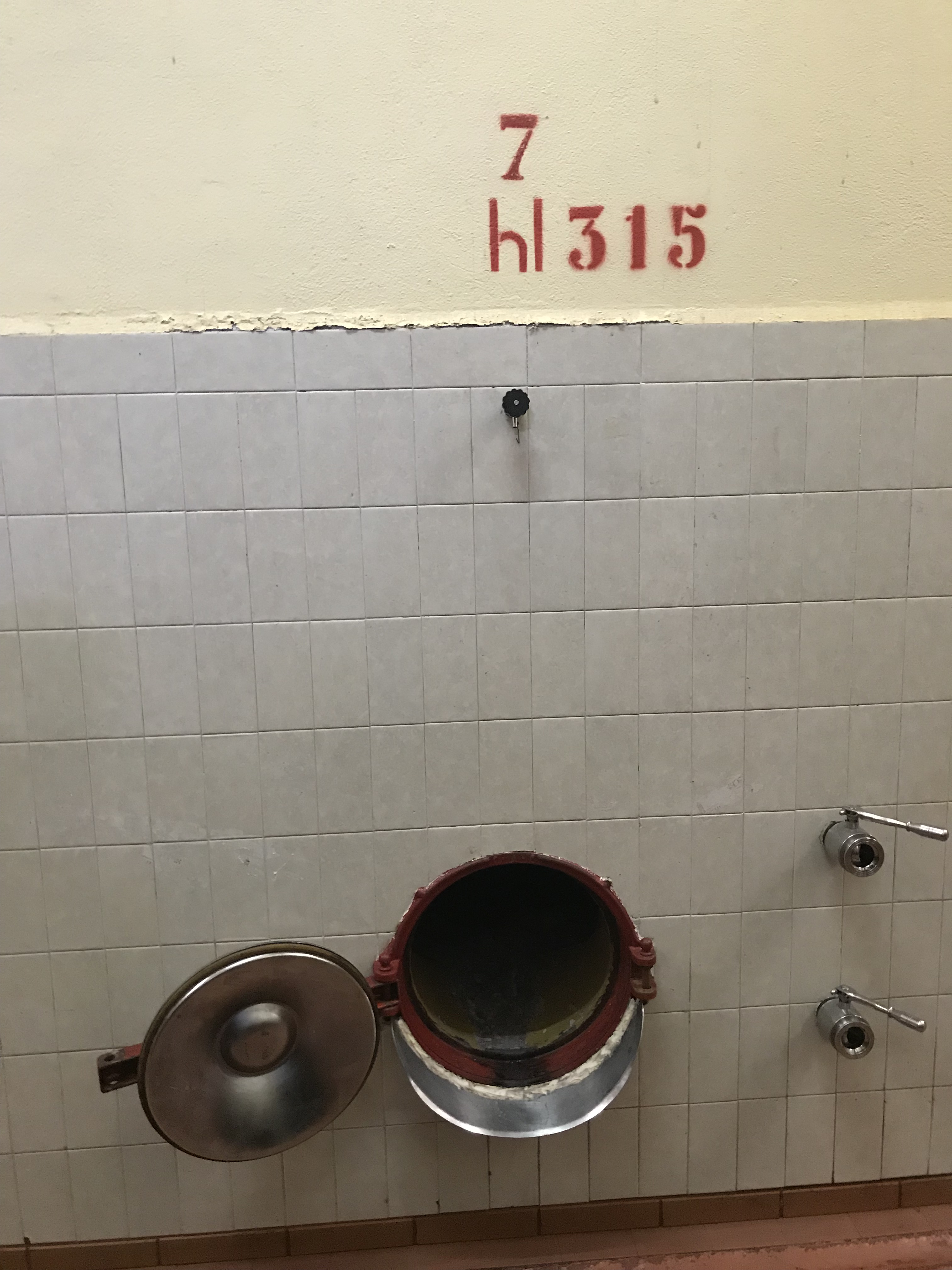
Despite my winery tours coming to an end, the experience was far from over. I travelled far and wide in search of wine in such a short space of time that the only option I have is to go back in the summer. From staying at fascinating seemingly undiscovered hotels and drinking wine in the library. To eating spaghetti with house wine next to Lake Garda I have some indulgent moments to look back on and treasure.
I adored Antica Bottega del Vino and although I feel slightly guilty about running away into the night, the wines I tried before fleeing were nothing short of sensational and educational. An importer from Lebanon told me all sorts of stories about vintage wines he’d tried. And I FINALLY enjoyed a natural wine. So what was the best thing I had in my mouth in Italy? It’s simply too difficult to say.
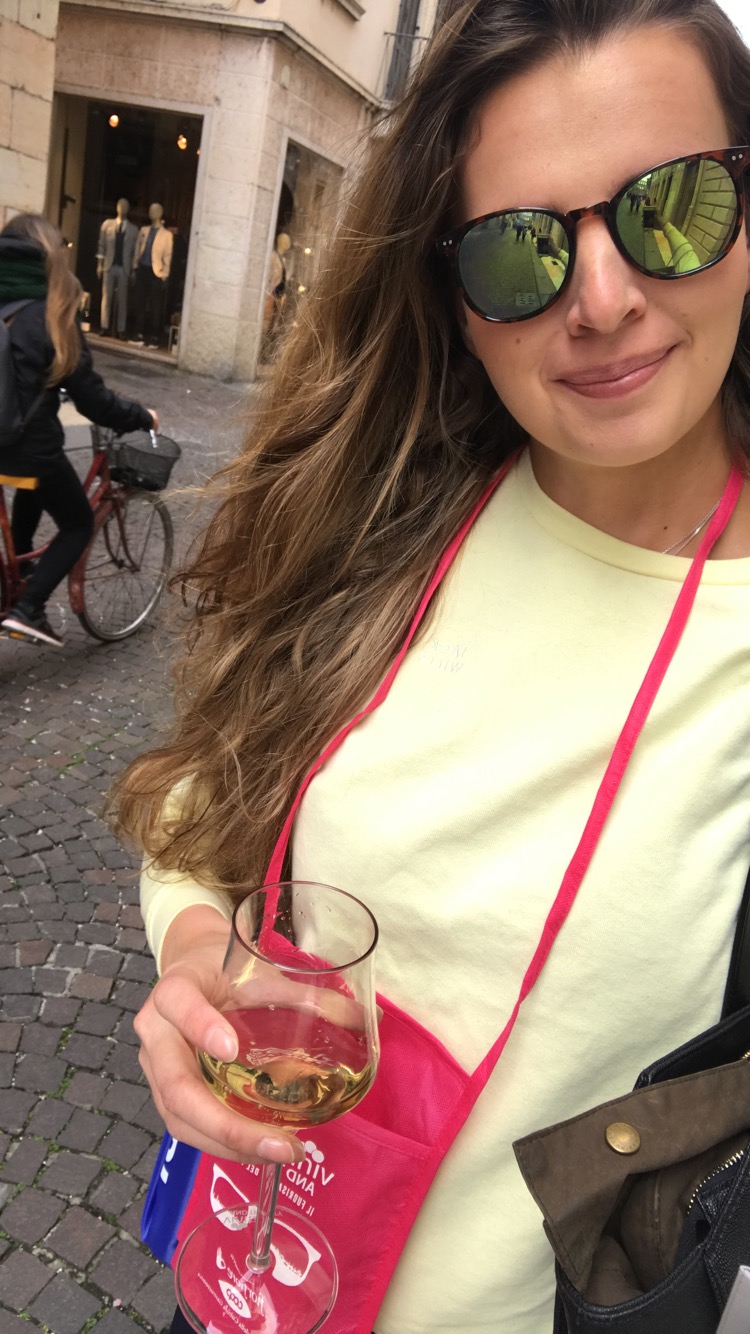
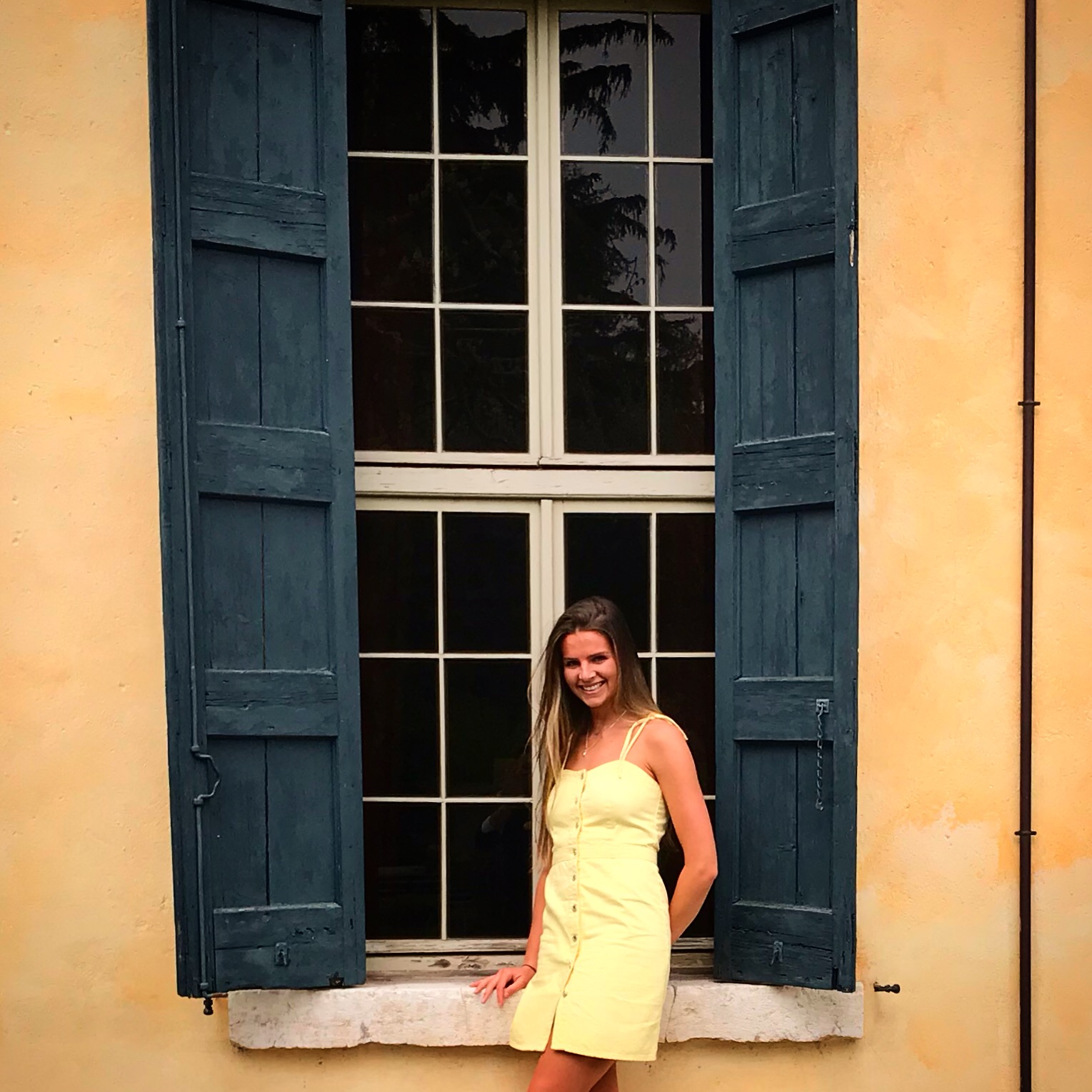
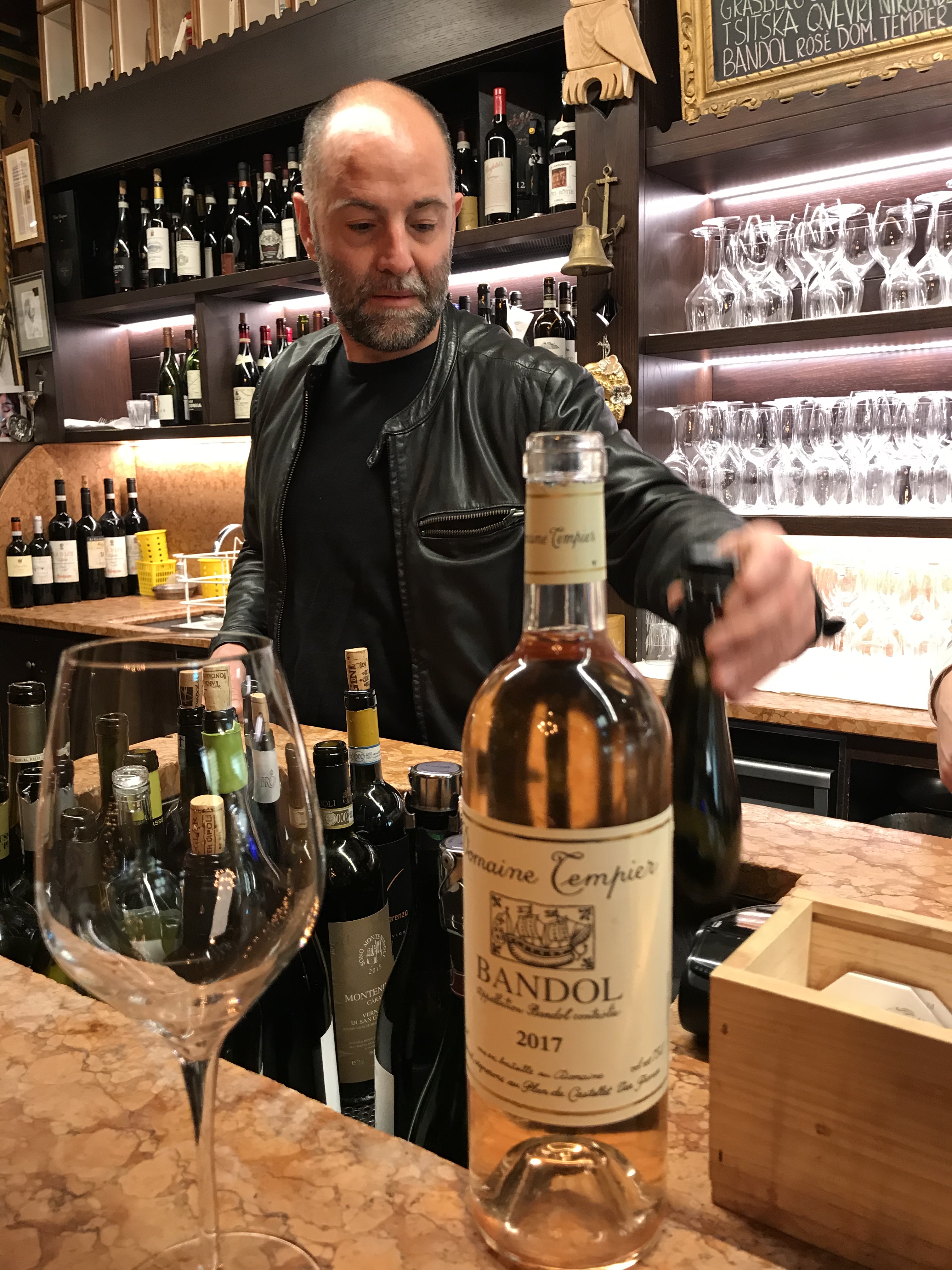
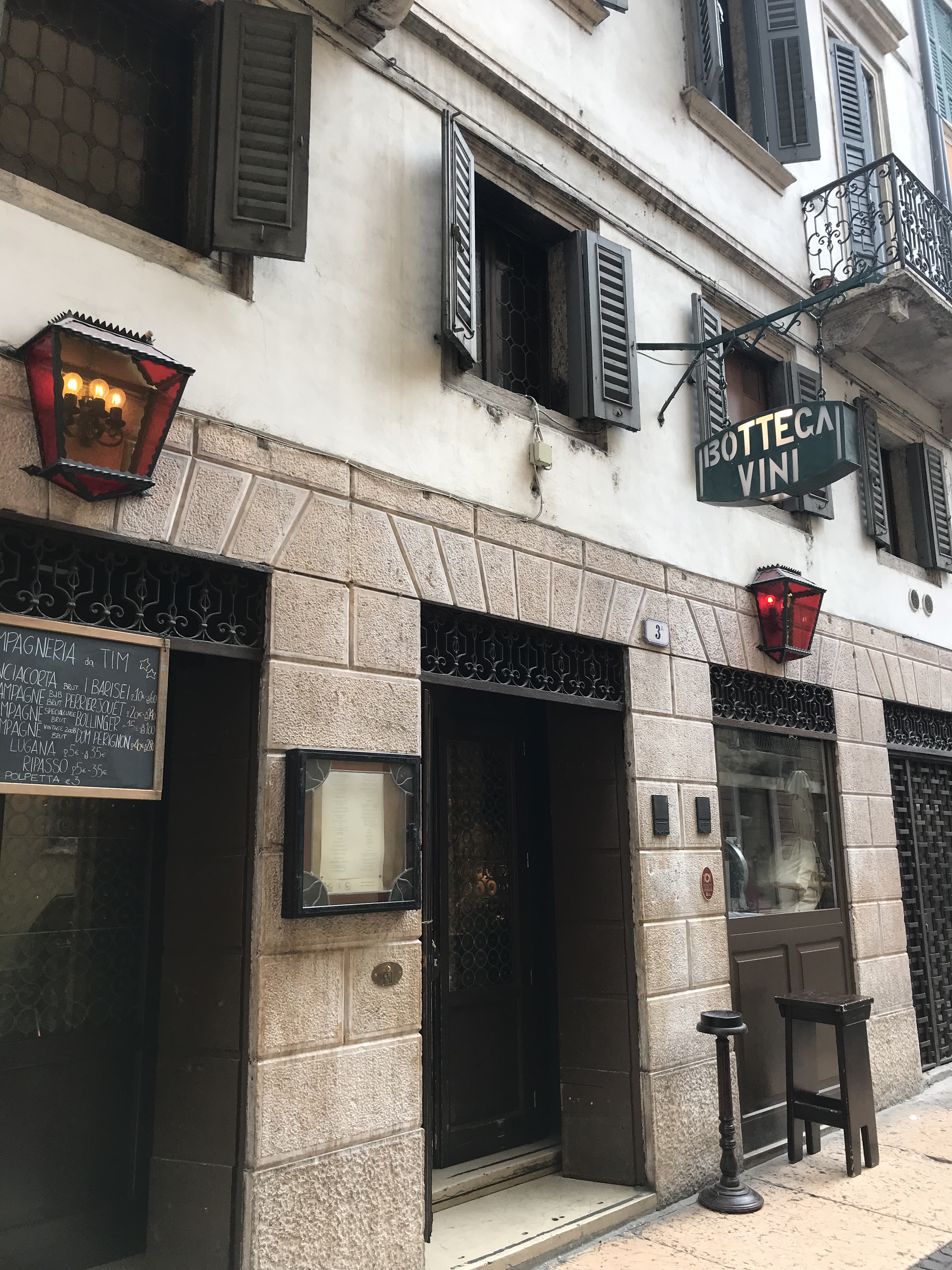

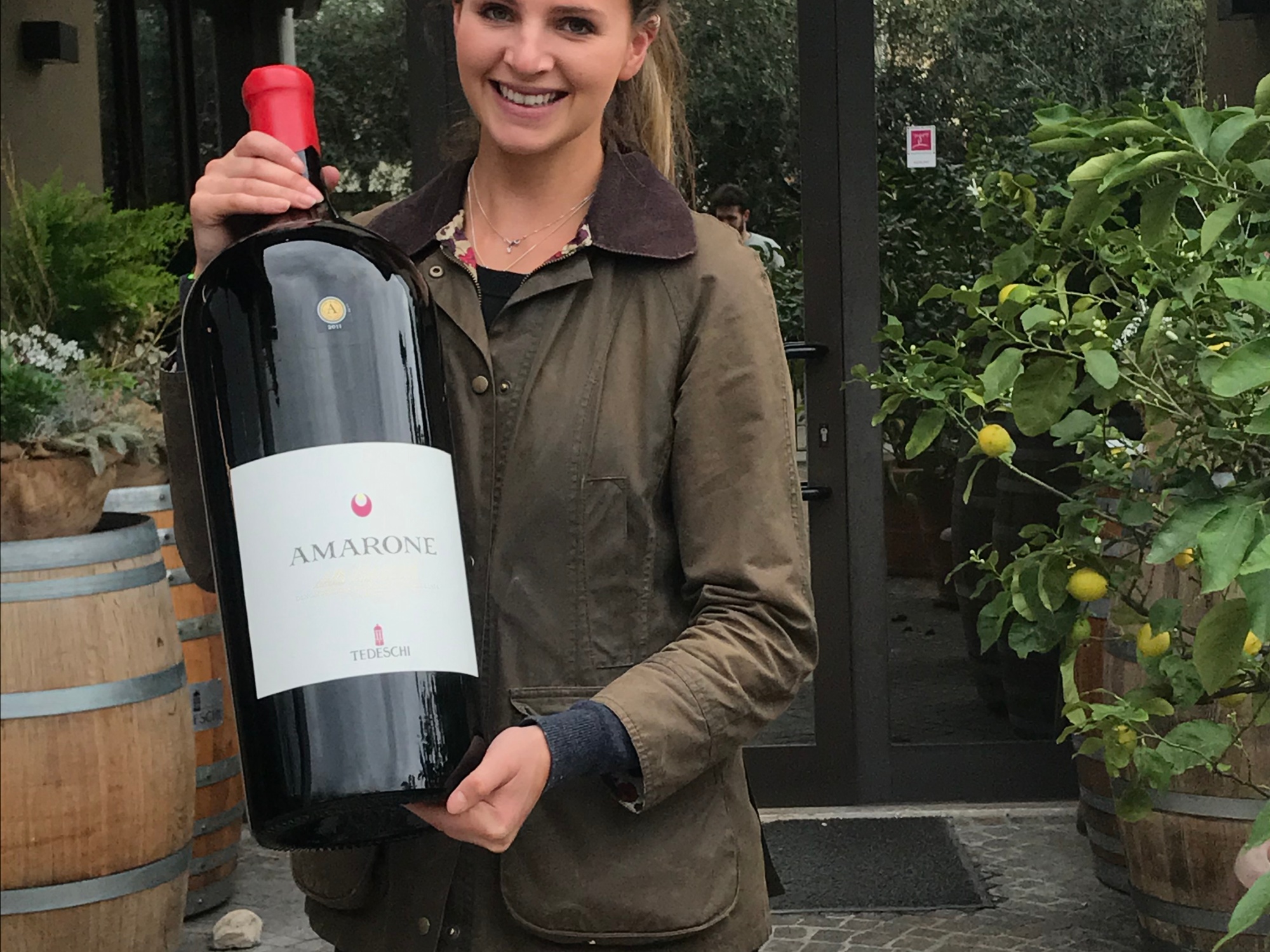
Hi. Which towns did you stay in & which hotels? I’d love to visit the region.
Thanks!
We’re going in November to Italy.
Maria
LikeLike